#EYLF documentation
Explore tagged Tumblr posts
Text
Blog Post Three- Emergent Curriculum, Documentation and Assessment.
Emergent Curriculum
In using the Reggio Emilia approach, educators foster an integrated curriculum that is both child-centred and emergent. The educator listens and observes the children in the classroom and records their observations to help plan the curriculum, prepare the environment and teaching tools that support the children’s interests. The educator then extends upon the children’s interests and experiences to guide children to further inquiry and deeper understandings; promoting the use of symbolic language to depict their understandings through a variety of art media.
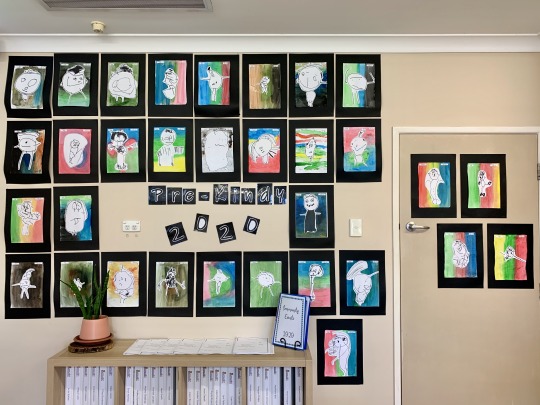
Visual Art Example
For example, at the beginning of this year, a child expressed interest in forming their own self-portrait. Using the emergent curriculum, I was able to form a unit of inquiry and introduce the concept of self-portraits to the class. In this discovery, the interactive TV was used to show the class examples of self-portraits by artists such as Vincent Van Gogh, Pablo Picasso, Gustave Caillebotte, Frida Kahlo and Rembrandt Harmenszoon van Rijn.
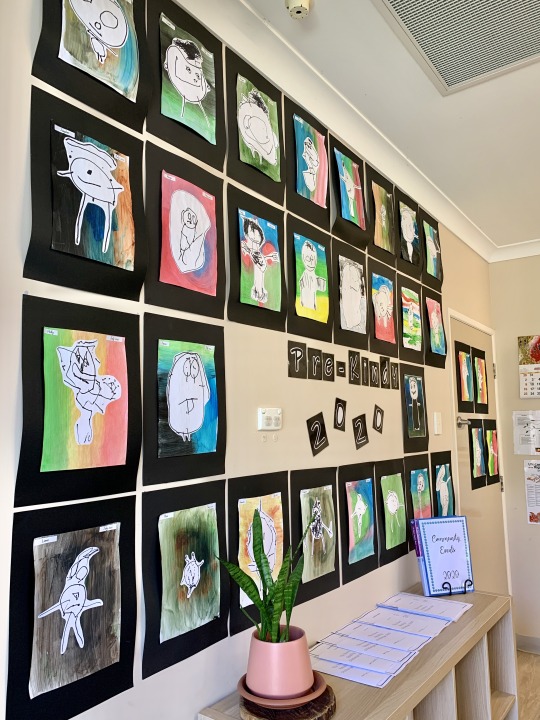
Afterward, the children were free to create their own self-portraits using materials such as paint, paper, markers and mirrors in the art area. To extend upon our exploration of artists, I placed books about artists in the reading area. Different interests surfaced as the children explored the variety of styles presented in these texts. In particular, Vincent Van Gogh’s sunflowers, the work of Georgia O’Keeffe and impressionists works by Pierre-Auguste Renoir and Edgar Degas. Through the unit of inquiry, intentional teaching of the arts was employed to allow the children to learn about famous artists, their work and broaden their experience of artistic expression.

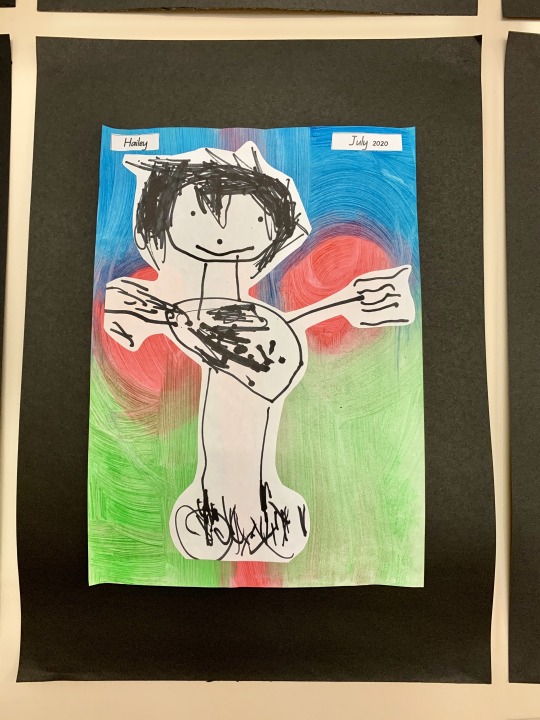

Drama Example
In creating dramatic play spaces, I have used the emergent curriculum and Jerome Bruner’s concept of scaffolding to extend the children’s dramatic play and introduce new experiences that promote the development of socio-emotional, cognitive and language skills. Some examples of the dramatic play spaces that I have formed include:
A Laundry
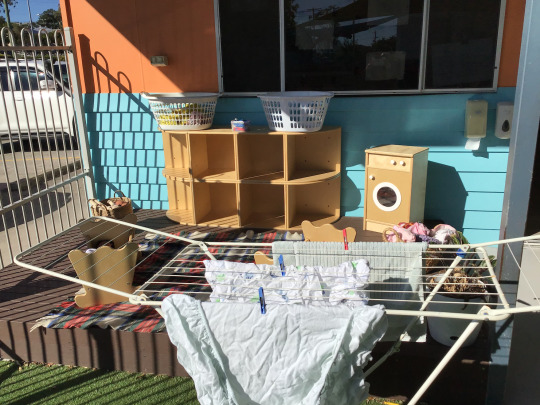
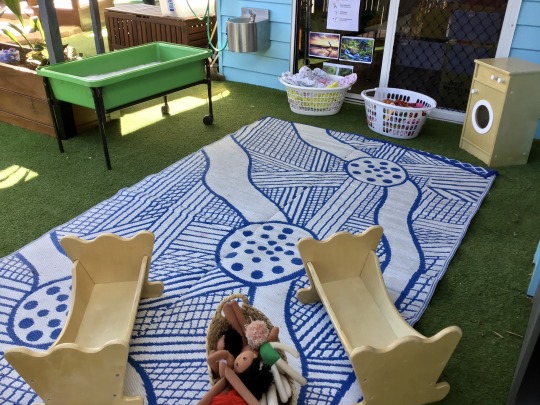
A café which served pizza, sushi, coffee and cakes
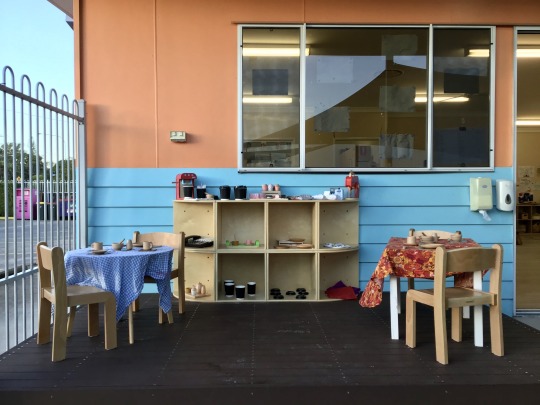
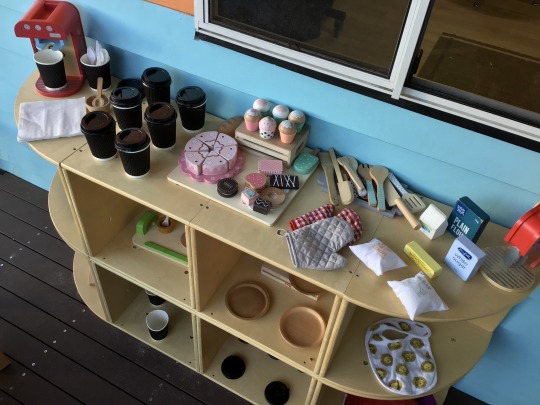
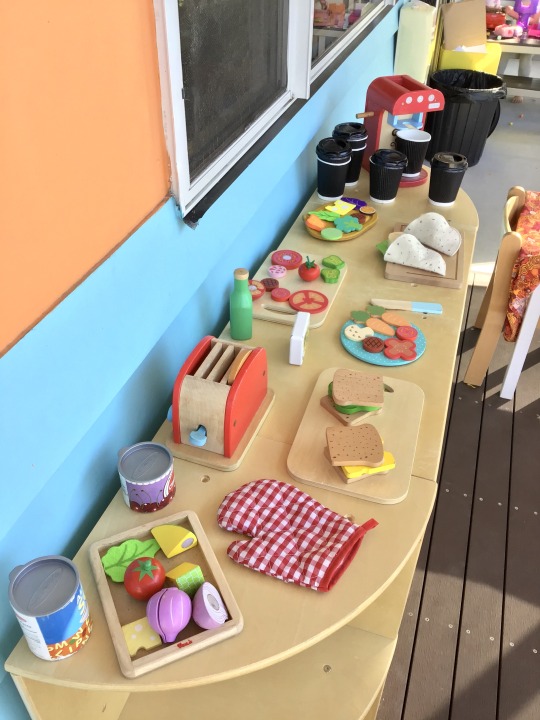
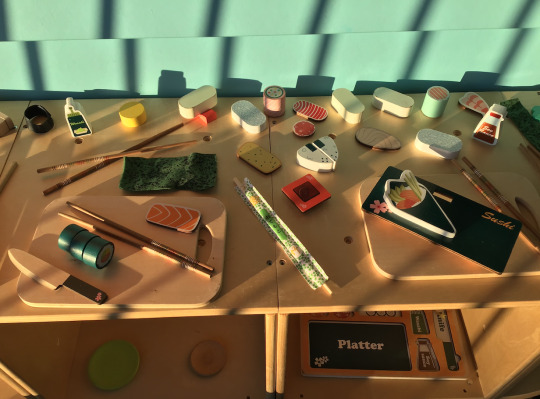
A restaurant
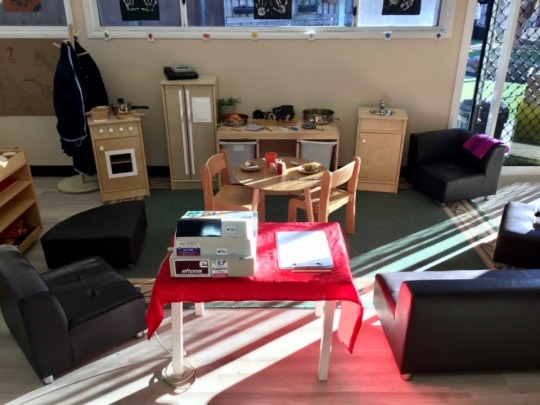
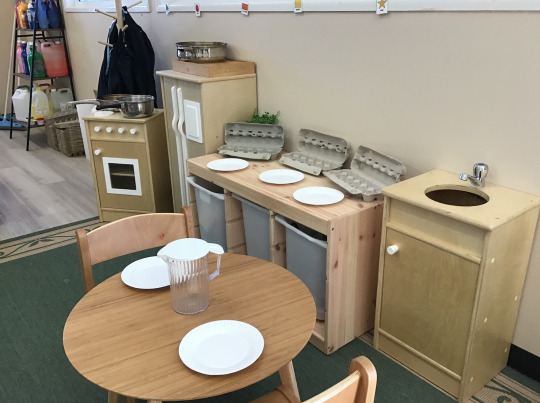
A hair salon

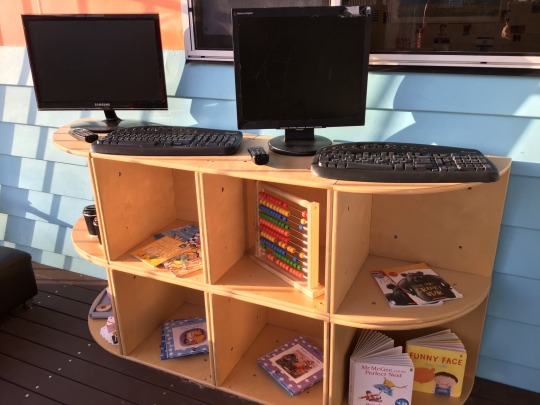
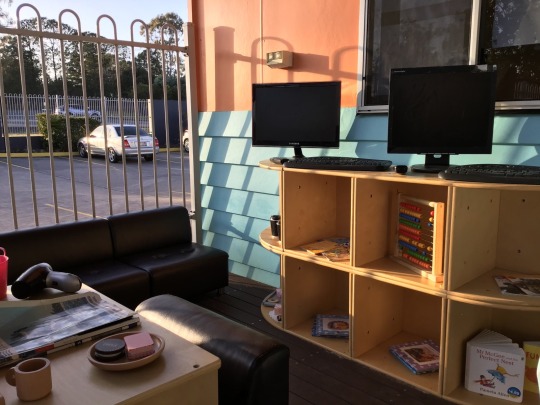
An Uluru small world space
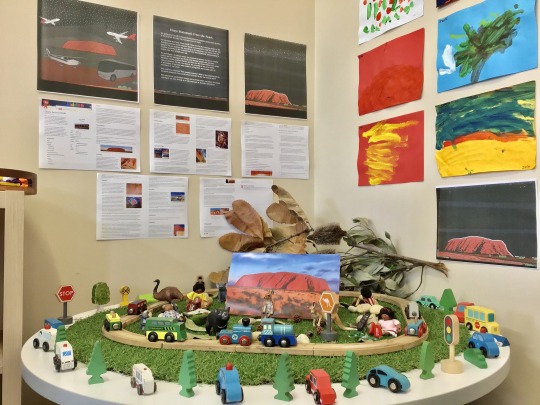
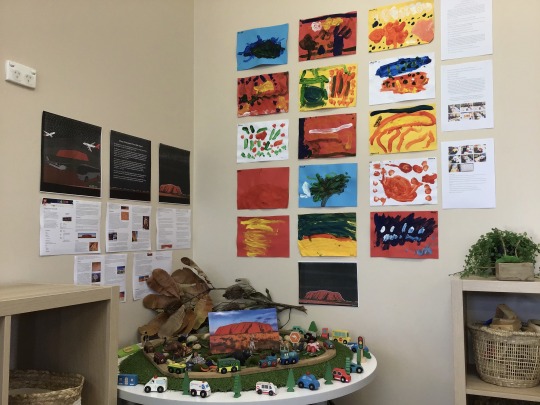
A farm
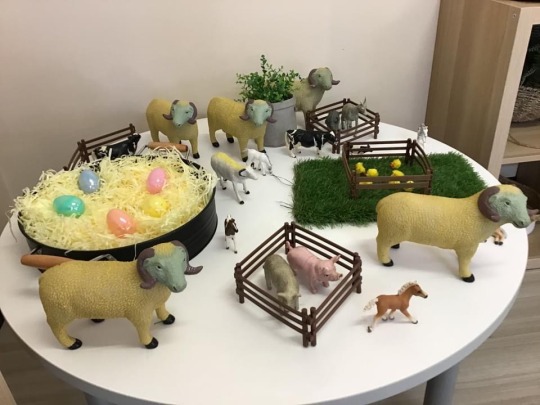
A zoo
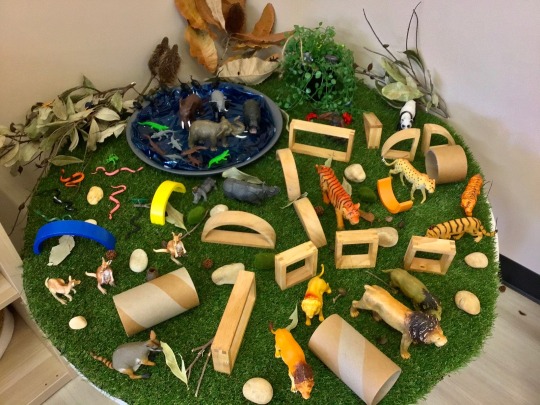
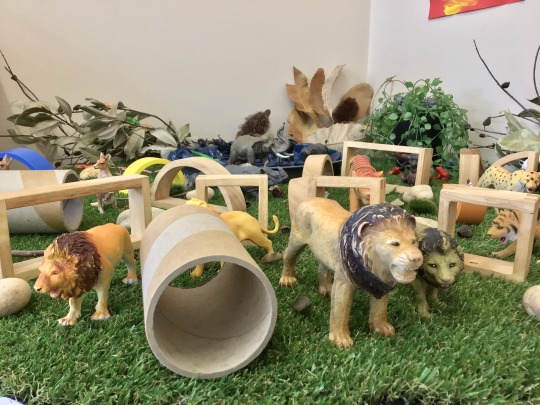
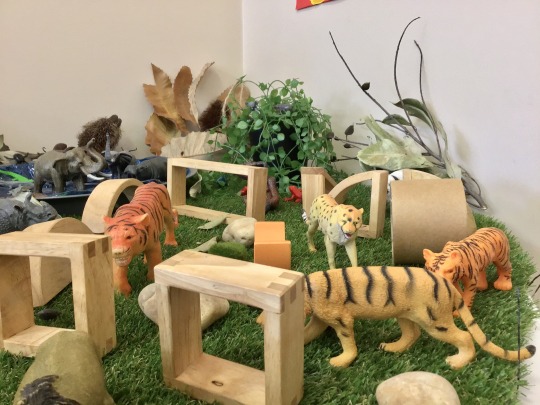
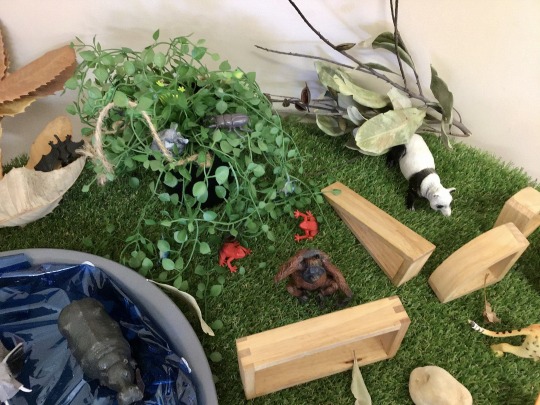
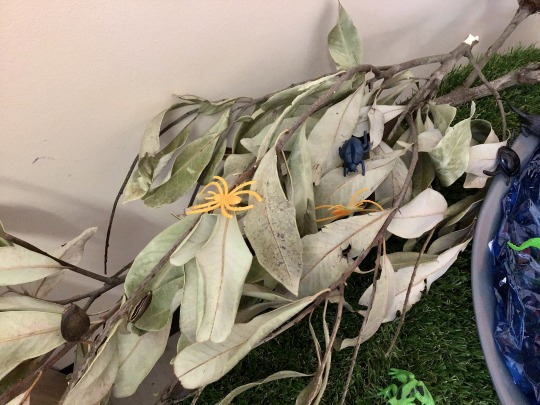

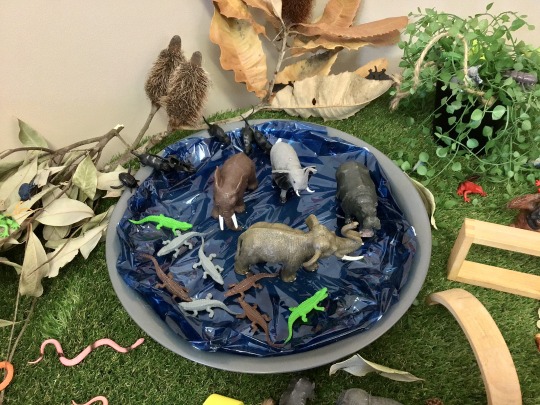
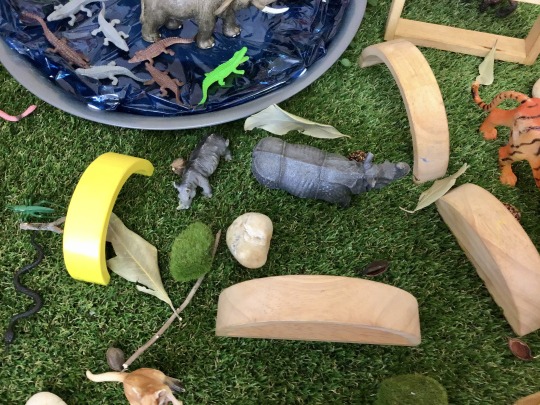
An under the sea space
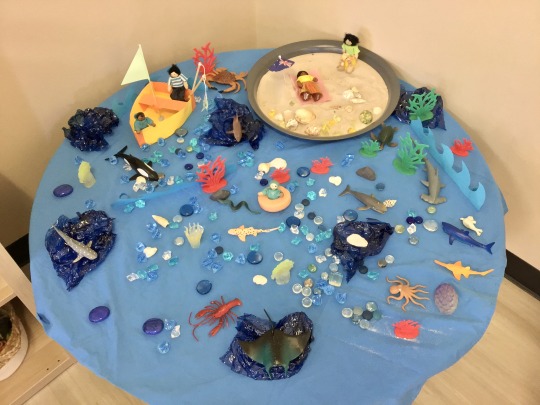
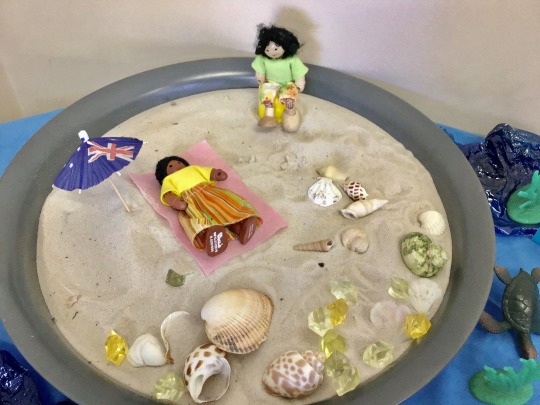
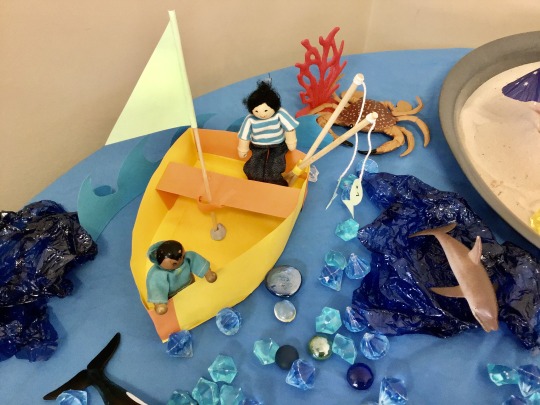
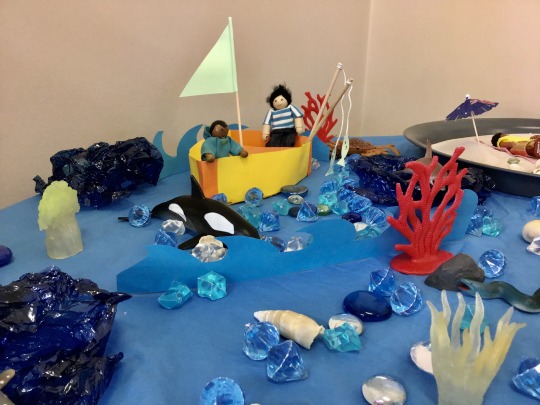
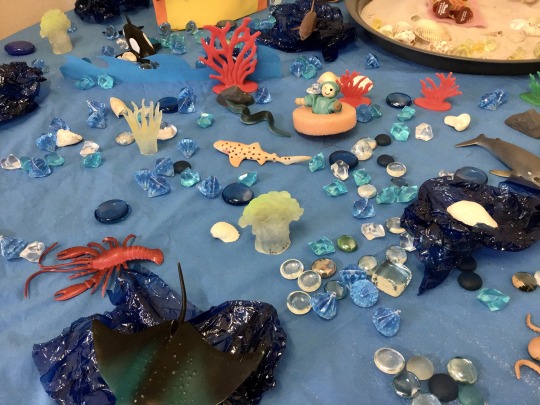
I have used intentional teaching to create authentic art learning experiences that are deliberate, thoughtful and planned with a purpose. For example, the restaurant was created inside after the children had explored a café space which served pizza, sushi, coffee and cakes in the outdoor environment. A key feature of this space was the introduction of a real cash register that was donated to the centre as well as the introduction of australian money and the children’s own menus. In this space I used open-ending questions as well as modelling and demonstrating to develop the children’s knowledge of roles and relationships. This included demonstrating how to order something from the menu, how to pay using money and how to play the role as a customer, server or chef through actions and speech. These interactions were used as a way to extend the children learnings as they engaged in play.
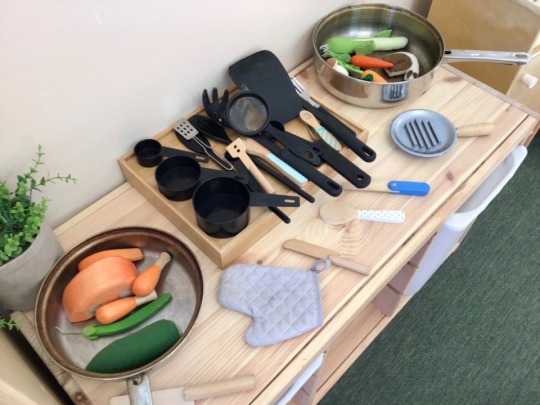
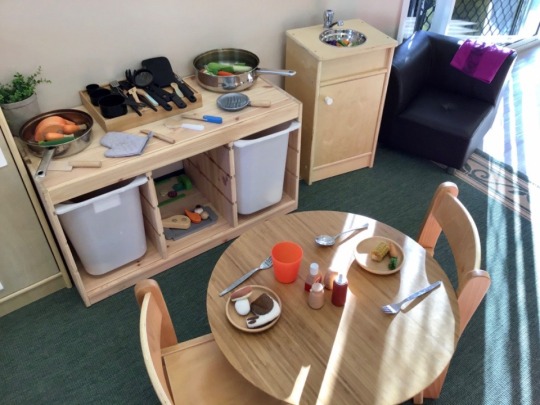
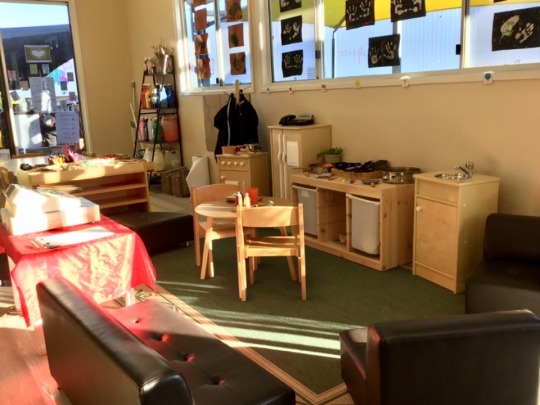
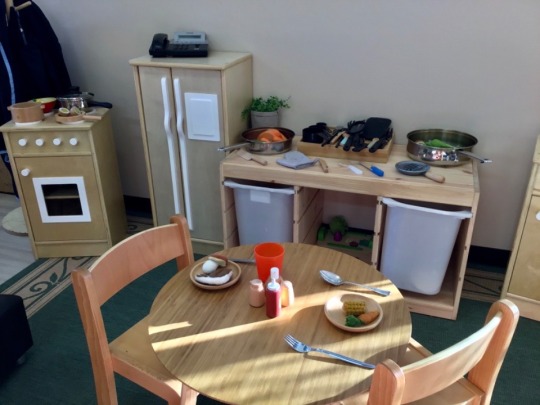
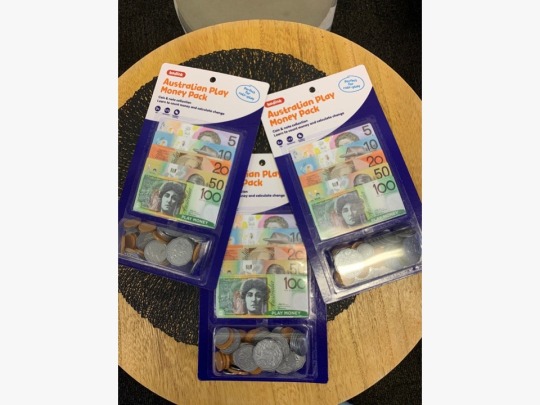
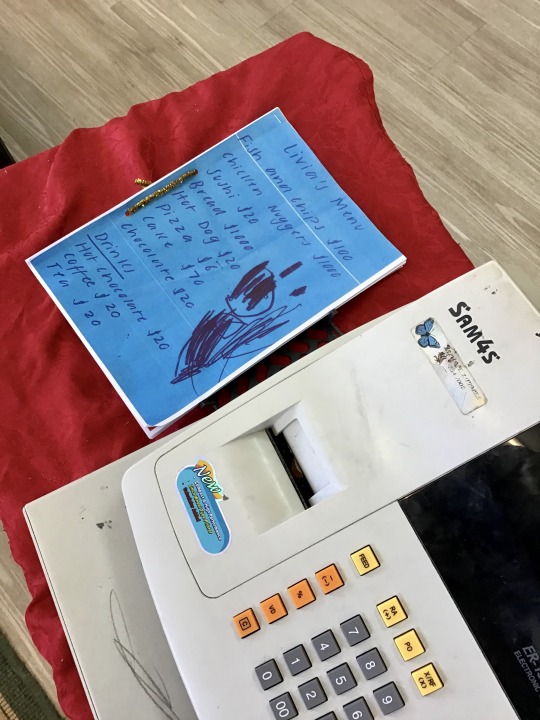
Documentation and Assessment
The EYLF recognises assessment as a pedagogical principle and defines assessment as the process of gathering and analysing information as evidence about what children know, can do and understand. It is part of an ongoing cycle that includes planning, documenting and evaluating children’s learning. The early years planning cycle outlines the process that early childhood professionals use in partnership with families, children and other professionals to collect, analyse and reflect on evidence of learning and development.
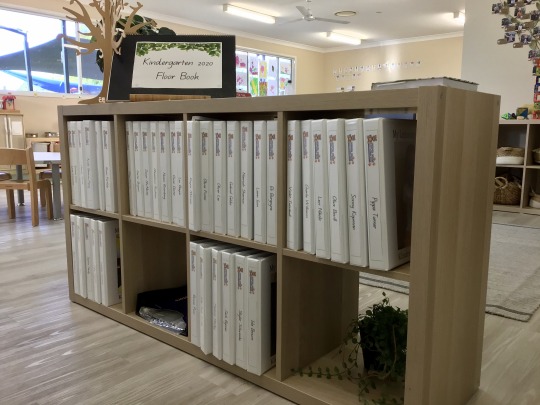

Why access?
Early childhood professionals choose a range of assessment instruments and techniques that reflect a whole-child approach and create a holistic picture of each child’s knowledge, understandings, skills and capabilities. Information gathered from assessment forms the basis for identifying the next steps for children’s learning and development, highlighting the child’s strengths, abilities, interests, noting progress and identifying where further support is needed. Assessment take into account the child’s individual circumstances such as the child’s family, health, wellbeing, cultural or language backgrounds and how they influence the child’s development and abilities.
Types of assessment
Early Childhood professionals use three main forms of assessment in education and care practice, these are defined into three categories and include assessment for learning: formative assessment, assessment as learning: diagnostic assessment and assessment of learning: summative assessment.
Assessment for learning: Formative Assessment
Assessment for learning is referred to as formative assessment. This assessment strategy allows the educator to observe the child as they engage in play and arts learning experiences. Evidence of the child’s individual learning and development is gathered from what the child might write, draw, make, say or do. The evidence is then analysed by the educator who applies their knowledge of child development theory, takes into account the child’s social and cultural background and links this with the five learning outcomes in the EYLF. This documentation is then shared with the child, the child’s family and other professionals where appropriate. The educator uses this observation to develop strategies and form new learning opportunities that extends the child’s learning. This informs the next stage of learning and informs program planning decisions about individual children on an ongoing basis.
Assessment as learning: Diagnostic Assessment
Assessment as learning is referred to as diagnostic assessment. Diagnostic assessment can take the form of interviews with children, work samples and observation techniques such as running records, anecdotal records, checklists, rating scales and event and time sampling. This form of assessment can be formal and informal and is designed to gather information about a child’s learning and development progress. For example, as a child engages in a visual art experience the educator can assess their fine motor control, pencil grip and their ability to form shapes, lines and identify colours. In drama experiences the educator can assess the child’s speech and oral language skills as they engage in symbolic play, interact with others in dramatic play experiences and contribute their ideas in puppetry and story drama. One of the benefits of this form of assessment is the early identification and intervention in learning delays and development problems.
Assessment of learning: Summative Assessment
Assessment of learning is referred to as summative assessment. Assessment of learning occurs at the end of a defined period of time typically six months into the year (mid-year summative assessment) and at the end of the year (12 months). A summative assessment is a summarised report of the child’s individual progress and achievements. The educator uses the child’s learning portfolio (that includes observations and assessment of the child) and seeks to ‘sum up’ what the child has learnt and where they have progressed (in their pencil grip, fine motor control, language and communication skills for example). Using the five learning outcomes, the child’s learning dispositions and marked progress is summarised. This assessment is reported to the child’s family which other educators and professionals can access to support’s a child’s continuity of learning as s/he transitions between groups and enters a new learning environment with different educators.
References from all three blog posts
Althouse, R., Johnson, M. H., & Mitchell, S. T. (2003). The colors of learning: integrating the visual arts into the early childhood curriculum. Teachers College Press; National Association for the Education of Young Children.
Australian Human Rights Commission [AHRM]. (2014). Embedding children’s rights into children’s services.https://humanrights.gov.au/about/news/speeches/embedding-childrens-rights-childrens-servicesChildren’s Services Central. (2012).
Provocations on Assessment in Early Childhood Education. https://www.ecrh.edu.au/docs/default-source/resources/ipsp/provocations-on-assessment-in-early-childhood-education.pdf?sfvrsn=6Department of
Education, Employment and Workplace Relations [DEEWR]. (2009). Belonging, being and becoming: The early years learning framework for Australia.https://docs.education.gov.au/system/files/doc/other/belonging_being_and_becom ing_the_early_years_learning_framework_for_australia_0.pdf
Dinham, J., & Chalk, B. (2018). It's arts play: young children belonging, being and becoming through the arts. Oxford University Press.
KornBursztyn, C. (2012). Young children and the arts: Nurturing imagination and creativity. ProQuest Ebook Central https://ebookcentral.proquest.com
Queensland Curriculum & Assessment Authority [QCAA]. (2018). Knowledge frameworks of Aboriginal and Torres Strait Islander peoples. https://www.qcaa.qld.edu.au/about/k-12-policies/aboriginal-torres-strait-islander-perspectives/resources/frameworks
Schiller, M. (1995). Reggio Emilia: A Focus on Emergent Curriculum and Art. Art Education, 48(3), 45-50. doi:10.2307/3193521
Sinclair, C., Jeanneret, N., & O'Toole, J. (2017). Education in the arts 3e. ProQuest Ebook Central https://ebookcentral.proquest.com
Wright, S. (2011). Children, meaning-making and the arts ebook. ProQuest Ebook Central https://ebookcentral.proquest.com
2 notes
·
View notes
Text
Sustainability – How can Early Years Educators show evidence of embedded practice? - The Empowered Educator
Sustainability – How can Early Years Educators show evidence of embedded practice? - The Empowered Educator
The Empowered Educator - Sustainability – How can Early Years Educators show evidence of embedded practice?

Summer Counting Puzzles
Little ones can learn how to count from 1 to 20 with these colourful puzzles. Vibrant summer illustrations make this a fun numeracy activity for kids!
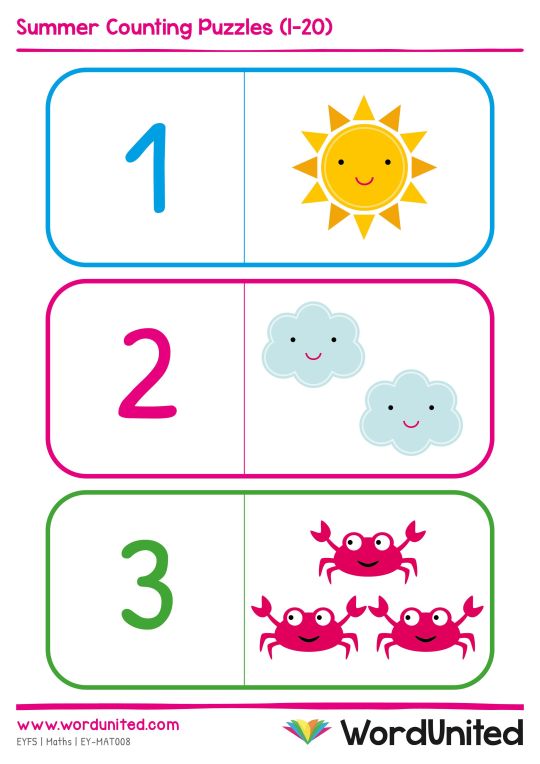
Observing Children’s Learning: A quick guide to the terms and definitions used when assessing learning
When you enter into the world of Early Childhood Education it’s no doubt just about play and teaching! Educator’s alike would agree that observing and documenting children’s learn…
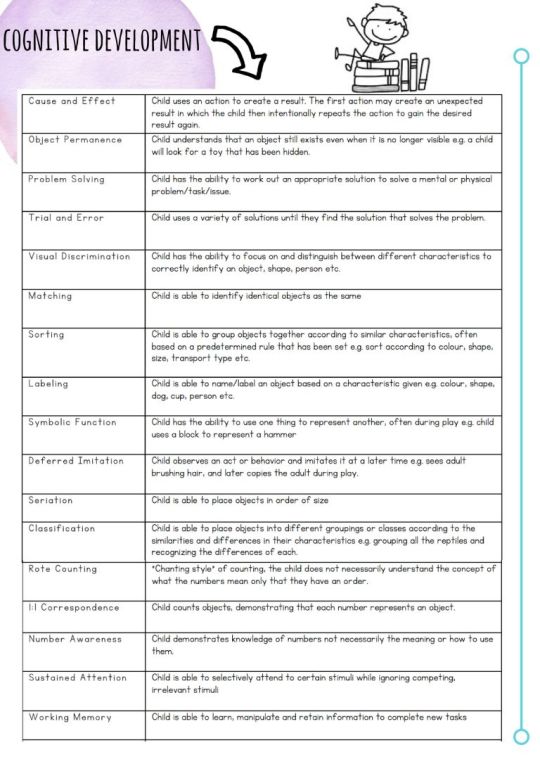
Early Years Science - Themed Activities - Science Sparks
A collection of fun, easy, science experiment ideas perfect for Early Years Science Investigations. Includes fairy tales, nursery rhyme and pirate themes.
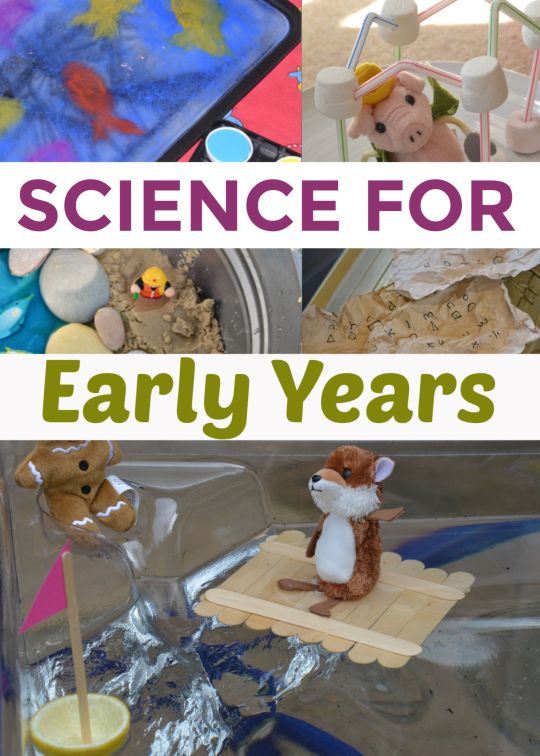
Early Years Resources - Science for Early Years - FREE eBook
FREE early years resources for science. Download my eBook containing lots of fun, easy and engaging science experiment ideas for early years.

STEAM Activities — My Teaching Cupboard
Looking for STEAM activities to challenge your children? I designed 30 STEAM activities presented as stimulus prompt cards. They engage and challenge my children as they explore concepts in S cience, T echnology, E ngineering, A rt and M ath. STEAM activities take STEM activities to the next

Early Childhood Educator Organisation & Documentation Tools
In this educator organisation series you can download a free mini organiser to help you create a simple step by step system to meet paperwork and documentation requirements yet still save valuable time!

Analysis, Reflection and Evaluation in Early Childhood Programming. - The Empowered Educator
The Empowered Educator - Analysis, Reflection and Evaluation in Early Childhood Programming.
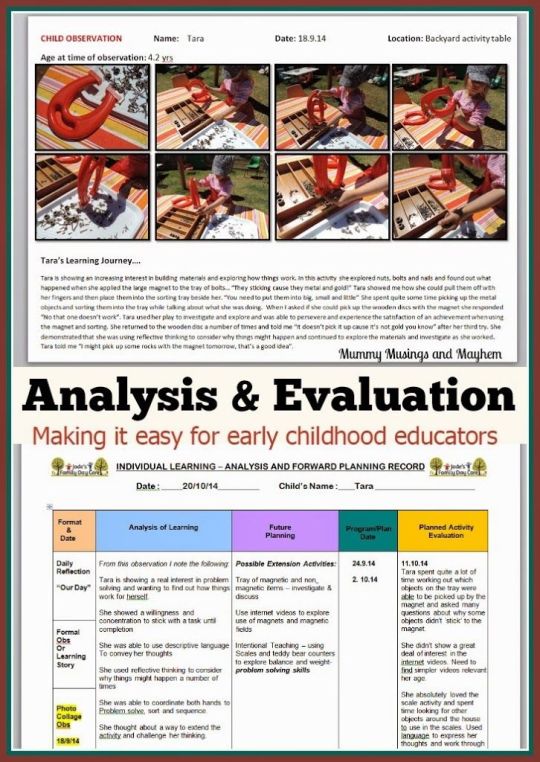
The Australian Early Years Framework (EYLF) and indeed most early years frameworks across the international early childhood community asks educators to incorporate sustainable practice into their service. As educators we must ensure we offer activities, experiences and environments that introduce children to the environment around them and also support them to find ways of looking after their own environment whether at home or in care.One of the most frequent questions I am asked on my Facebook page is…“How do I show evidence of embedded sustainable practice – I don’t want chickens and I don’t like gardening so what am I meant to do?”It’s honestly not as hard as you might think but it’s also a lot more than just having some chickens or a vegetable patch. Good news for those educators who do not want to focus solely on those activities!To be able to ‘show evidence’ you first need to clarify your own values and what is important to you as an educator. If you are part of a large centre environment then it would be best practice to come together as a team and decide on what each team member is passionate about, what they could offer to a sustainability audit and policy and how they could be involved individually as well as being part of a united group. Some things might work well for your area, team or community of children, some will not. It is your job to get the parents and children involved as active participants and allow their ‘voices’ to be heard (as well as your own of course!) as you explore sustainability.Keep in mind that quality is usually better than quantity – whatever activities or ideas you put into practice make sure they are meaningful and provide opportunities for the children to become engaged in the learning process while also having fun.Here’s a few ideas and suggestions to get you brainstorming!How to embed sustainable practice into your early years service.Potted plants inside and outside Flowers planted in outdoor area for children to cut and use in their play if you garden Access to quality wooden and fair trade resources Access to natural materials such as pebbles, rocks, sand, dirt, gardens, branches etc Mulch your gardens and vegie patch Install a small worm farm Make a small (or large) vegetable garden or flower garden for the kids to help you with if you like to garden Label bedding so they can be reused for same child during the week to cut down on washing and water use. Install a water tank for use when watering gardens or during water play Ensure toilet used for the children has a half flush button and provide education around this Display pictures of taps being turned off Recycle paper for craft and drawing Cut cardboard boxes up when you purchase new resources and add to your stash of cardboard for the kids Provide a tub or bin for children to add recycled materials and paper for craft. Encourage use from this bin. Use child sized bins for scrap containers – waste, organic, recycle (or whatever correlates to your council collection bins) Set up a routine of children helping to empty organic scraps into the compost or feed the chickens or worms. Use washing line for children’s bedding and soft toys – provide small air hanger for children to hang small things up themselves. Use energy efficient globes and turn off lights when not needed – ask children their opinion on when to turn off and on Use non toxic and environmentally friendly cleaning products with reusable cloths. Include stories and games with environmental content regularly on the shelves Include stories in your parent newsletter of any sustainability focused activities and their outcomes Send home flower cuttings, vegies and seeds with the children to share with their family. How to show evidence of your embedded practice.Display photos of children demonstrating sustainability practices/activities Display photos of children using natural materials. Write down conversations you have with the children and include in their portfolios or observations Use checklists and photo stories Include intentional teaching activities on your program Ensure you’re indoor and outdoor environment reflect embedded practices, natural materials and resources as well as child friendly signs Record conversations as they create or build with natural materials Write a basic sustainability policy for your service Include information in parent newsletters about where your toys and resources are sourced from. Write down any parent feedback on your weekly program or in your reflections/daily diary Include photos in the bathroom of turning taps off and an arrow to the half flush button on the toilet. Label bins, buckets with recycling and organic as well as waste. We have one for the chickens too. A Little About MeJodie Clarke is an early childhood professional supporting educators who want and need to stay passionate about the work they do! She has 30 years hands-on experience in the early childhood and human services sectors across many different roles.Jodie is mum to 3 in Australia and has already helped thousands of educators with their work through her popular blog posts, activity ideas, online training and e-books.
0 notes
Text
PREMIUM BUNDLE – EYLF Resources + EYLF 40 Weeks + EYLF Video Series - EYLF Resources
https://www.reviewape.com/?p=5160 PREMIUM BUNDLE – EYLF Resources + EYLF 40 Weeks + EYLF Video Series - EYLF Resources - Product Name: PREMIUM BUNDLE – EYLF Resources + EYLF 40 Weeks + EYLF Video Series – EYLF Resources Click here to get PREMIUM BUNDLE – EYLF Resources + EYLF 40 Weeks + EYLF Video Series – EYLF Resources at discounted price while it’s still available… All orders are protected by SSL encryption – the highest industry standard for online security from trusted vendors. PREMIUM BUNDLE – EYLF Resources + EYLF 40 Weeks + EYLF Video Series – EYLF Resources is backed with a 60 Day No Questions Asked Money Back Guarantee. If within the first 60 days of receipt you are not satisfied with Wake Up Lean™, you can request a refund by sending an email to the address given inside the product and we will immediately refund your entire purchase price, with no questions asked. Description: Are you overwhelmed with the EYLF & don’t know where to begin? I have put together all my EYLF resources for you & a NEW 14 video series that explains the EYLF. Weekly Program – 40 early learning videos EYLF Professional Development Series – 14 videos Start thinking of the work you won’t have to do! Introducing my EVERYTHING Premium Bundle Helping you feel less stressed and more organised Imagine a year with less paperwork & more play Years of Work done for You in One Place Usable documents and templates for planning Be organised and stay on top of your documenting this year! Here is the one editable document you must have this year. Everything you need to jot down your ideas, track interests and plan for play where you are! Every week communicate with parents and care givers with these blank newsletter templates. They correspond with the EYLF Planner. Tie everything together! You can create rosters, newsletters, homework pages with the following 52 templates. Here is an editable version of the EYLF Starter Pack that you may already have. Many asked for the editable version so here it is for you. Simply download and start your planning. My Daily Planner is the best format I have used. It is flexible and editable. You can edit your Daily Planner and stay organised. Here are my EYLF Cards that you can print off as photos. You can use these to slip into a child’s work folder or use them to make a display. These EYLF Learning through Play Cards help to communicate the importance of play to parents. You can print them as photos and use them to display next to photos of children engaged in the play being focused on. Quick no fuss displays! This Portfolio Bundle is designed to help you create an amazing selection of learning and memories for the families that you support. Included in this are A3 Templates – 50 pages {Portrait and Landscape} Portfolios and documenting learning is easy with these helpful Portfolio resources. , Portfolio Cards – The photo cards can be used for a “Photo Album” record of your child’s learning or you can use them to simply glue or slot into each A3 Portfolio Template page. Create your learning stories quickly and easily with these editable templates! Add you pictures, stories and quotes without thinking. Copy and paste the learning that is occurring and share this with parents in their child’s Portfolios or Learning Folders. These templates are designed to be edited whereby you can add your own indicators or copy and paste the ones included. Even if you are not from WA this document is excellent for expounding on the EYLF for the Kindergarten years. I want quick ways to link activities to outcomes without the fuss of creating templates. I don’t want to type the outcomes every time I have to document something so designed quick “Copy & Paste” Outcomes that reflect the EYLF. These go on everything including my planning, portfolios, observations, reflection and activities. Be organised and stay on top of your documenting this 2016! Here is the one editable document you must have this year. Everything you need to jot down your ideas, track interests and plan for play where you are! Every week communicate with parents and care givers with these blank newsletter templates. They correspond with the EYLF Planner. Tie everything together! You can create rosters, newsletters, homework pages with the following 52 templates. Help your class to run smoothly with these helpful editable tools! This year I have a combined roster. A Sensory & Laundry Roster in one. The week a child’s family is on sensory play they will collect laundry as well. This will mean there is less fuss and parents can be prepared as they know way in advance (a whole year) when they will be on. On the child’s first day I take a picture of them holding the “My First Day” sign. I use this photo on the child’s Portfolio and as a memory keeper. I have also used it for my own children as they have entered a new year of school. There are editable Name Tags. Simply open up in your children’s names. These are excellent for helping children to find their belongings as they remember the symbol on their tag. As the year progresses they can begin to identify their names without the symbol. Here are some editable labels that you can laminate and stick to your art and craft supplies, play boxes and anything in your room that needs labelling. You can use the ones I have created as well as make your own. Celebrate each child’s birthday with the printable Birthday Pack. Give each child a name tag to wear for the day. They can wear the crown or decorate it as well as take home a keepsake bookmark and name card. Make learning come alive quickly with curriculum plans, ideas and learning resources. I was sick and tired of hours of work at home taking away from my own family and personal life!! An editable 10 Week Curriculum Plan with play ideas, book suggestions to help get you started! Each week has indoor and outdoor play ideas to help you provide a stimulating environment for your early learning setting. This was my first every plan I did in my Kindy Sea Curriculum Plan. I tied this in with craft, literacy and numeracy. Included in the pack are my charts, posters and much more! As this is my first plan it does not link to EYLF There are some great resources through! This is a substantial Curriculum Plan and Learning Pack for when your children show an interest in Insects. I have included a powerpoint presentation including pictures of insects as well as information on where they may live, what insects eat and other fun Insect facts. Also included are some Inquiry based learning centres and Insect reading cards. When you are following the interests of children or getting to know the children in your care, PETS is a wonderful interest area that the children will love! This Curriculum Plan goes with my Pets Dramatic Play. This editable EYLF Christmas Curriculum Plan will get you started with Christmas in your early learning setting! It includes ideas, activities, learning pack, resources, reading cards and even a powerpoint for display or for your children to use! Create amazing play spaces with ease that respond to interests of your children. I want to spend more time playing with the kids and less time planning and organising! Print off these Post Office Dramatic Play posters and set up your area quickly and without a fuss! Children love to talk about their pet and it is a wonderful way to help connect family life to their early learning setting. Children can care for their pets and be immersed in play! The Honey Shop would have to be one of the most popular areas I set up! The kids absolutely LOVE this simple yet fun shop! When your child is interested in going to the Zoo then these printables will help you! Children can buy tickets and you can set up different animals in your Zoo. Print off the signs and you are ready to go! Playing schools and teachers can encourage children in so many learning areas. Remember to add dress up “Teacher” clothes to your dramatic play! You can set up a waiting room where patients are admitted or you can set up a hospital. Children can look after “sick” dolls and teddy bears or each other. Children can fill in a registration form to join dance classes. I love to add a variety of jazz, classical and popular music that the children enjoy. Helping children to learn their phone number and their emergency details as they tell the fireman where the fire is and explain details of the emergency! Vital skills for our little ones. You can add this to your sand play and construction area to encourage play that builds and experiments! Set up your building teams and off you go! Children are encouraged to write a menu and think about whole foods. There are A-Z food pictures to match with the alphabet for extra learning fun. Children love this play as they zoom around to emergencies and set up different police scenarios! Children can practice copying “number plates” and make a police hat. This dramatic play encouraged children to be creative – paint, collage, draw and more! Children can practice their colours and matching them with words. Organise play Days that create special memories with your families! Simple no fuss days. There are 10 simple activities to set up. Easy, fun and memorable. Print off the activity posters and the plan and hand it to each Mum so they can move round with ease! This is designed for you to quickly and easily throw a Father’s Day Morning in your early place of learning. Set up your activity tables and allow children and Dads to have a morning together. Parent Play Days involve your community in fun mornings designed to invite and include your wonderful families. There are free rotational activities that parents and children can do together. Simple, playful mornings that create precious memories together! I love these mornings and seeing the families enjoy building relationships and developing a sense of community. 10 Great activities where children will be involved in craft, cooking, writing, Colour Sorting, Sensory experiences, Investigations and more!! 30 pages ready to print! There are 40 Centres to use for Science Week. I also include a Science Play Day with parents. There are enough experiences to flow through the week. Hands on sensory science fun! Easter is such a special time to celebrate. Remembering the death of Jesus. I love to have an Easter Play Day with parents or older buddy classes. It is a wonderful morning with lots of activity and enjoyment! The day is set up for new families to mingle and feel relaxed. Children can go where they like and have a small play in their future environment. I have 10-12 activities labelled for the children that you can use for your Orientation Day. Enjoy Learning Centres that can be changed quickly and organised in advance! I don’t want to be thinking of activity ideas everyday – I just want something to print off and change easily as I need to! Sensory Play is very important for children as it helps them to integrate all their senses. Sensory play helps children process all the information the brain receives from touching,smelling, tasting, hearing and seeing. There are a number of different types of sensory activities you should consider for each modality. Within each Sensory Play experience there are different senses being engaged. With over 40 Sensory Play Centres these activities cover a range of sensory experiences for your young children – : These 20 Literacy Centre Ideas can be rotated with your little preschoolers. I store each activity in a box and rotate the children. Foundational skills are developed and I have one on one time with each child. Here are 160 printables for you to add weekly and build each Literacy Centre. There are 20 activities that you can add quickly to your daycare and classroom. These activities focus on developing Literacy skills and building foundational and emergent skills. From writing to letter recognition. Here are 20 Math Centre Ideas that you can rotate with your preschool to Kindergarten aged students. I store each activity in a box and rotate the children. Foundational skills are developed and I have one on one time with each child. Here are some fun, hands on and interactive Maths Centre ideas for the preschoolers in your life! These activities are easy to organise and help to develop number recognition, 1:1 correspondence, number ordering and more. Have these stations ready to go and add to your curriculum. Portfolio Templates linking to Literacy & Maths Centres These 40 Portfolio templates link with the above Literacy & Numeracy Centres Support children with early learning literacy and numeracy skills… As a group we point, practice and play. You can set these up in your literacy and math centres. You can laminate the charts and write over them with a marker. This is the set of flash cards I created to teach my kids how to count, learn their letters and identify numbers and groups of objects. I used the set from when my kids turned three and am still using it with my 5 year old to finish teaching her the first 120 sight words. Each week focus on a number and a new letter. Print these activities as Learning Centre activities or as weekly practice booklets. Great for the children who need a little extra. Letter of the Week A-Z Pack. Each week focus on a letter and number. These activities can be printed then laminated. Each week you can build up your play boxes for the children in your care. Involve parents with weekly vocabulary charts and “homework”. There are set activities included in the Letter and Number of the Week Booklet. There are 26 full colour Alphabet Charts for you to print off. Each alphabet chart has items that begin with each letter. Focus on children learning their letter sounds and hearing beginning sounds. Each letter has the letter you can decorate and the picture you can craft. Each week there are simple ideas you can do with your child Our Beginning Sounds series of teaching resources are designed by passionate early educators who not only want you to help teach your child the alphabet but we want you to play and enjoy the process! Print off this Alphabet Picture Game for a fun and interactive way to hear beginning sounds. Laminating this game will enable this Alphabet Game to be used over and over again. Original Starskills weekly online video, worksheets, vocabulary and homework cards! There are 10 week blocks that include the Animal, Colour, Food and Places Programs. Each week watch the online video, hand out learning photos cards and print off learning sheets. Each week there is a Literacy and Numeracy focused learning sheet to print off. You can do these activities or print them off for children to take home. More resources that link link home and your setting and encourage parents to read information we are providing parents Babies, toddlers, preschoolers, Kindy and 2nd language kids can enjoy these videos to develop their vocabulary! Print these off as photos for your students to collect. There is a vocabulary card, number card and homework card to collect each week. These Portfolios tie in with my 40 weeks Early Learning Program. Simply print them off, complete and add your photos. Each week experiences tie in with the 40 Weeks Program. There is a colour version if you are fortunate to have a coloured printer. I also have a black and white version for you! You can print it A3 or A4 depending on how you like it! At the bottom of each page there is an EYLF Outcome included. I completed the 40 Weeks Program in a local community playgroup with babies, toddlers & preschoolers. It was run at the Salvation Army. The families loved the weekly structure as well as learning resources they collected each week. I never had to think of what to do as everything was done for me! 14 EYLF Professional Development Video Series! EYLF Resource customers will be able to purchase my Online 14 Week Video Series. This series discusses each Principle, Practice and how to plan using the EYLF Outcomes. Excellent for Early Learning Professionals who desire to grow in their understanding and reflect on current practice. The Starskills EYLF Professional Development Video series has helped me to understand the EYLF more – but more importantly has given me lots of practical ideas for each Principle, Practice & how to plan using the outcomes. What I have learnt I can apply. All the resources and templates save me thousands of hours! This is a tremendous help for me as I work and it means less hours on paperwork and more hours playing and interacting with my own children at home. It is all in one place and this is super practical for a busy Mum & teacher! Don’t be confused by the EYLF – learn more in the comfort of your home with my EYLF Video Series All of the above PREMIUM EYLF Resources are available to download and use from the site right NOW! Weekly Program – 40 early learning videos EYLF Professional Development Series – 14 videos Ruthie – what an incredible job you have done! I am so thankful that you decided to share your knowledge, understanding and resources with others. I am feeling very grateful and completely satisfied with my purchase.. The EYLF Resources has been invaluable to me. It has saved me a lot of time and money. It has also increased my confidence as a new early learning professional. All of the resources are visually appealing to both children and adults. The resources will encourage children to love learning – and adults to love teaching even more. I have now purchased my Early Resources Premium Bundle and I am very excited to start using it in my Early Learning setting, everything is digital which fits in with how I program and document, it is all very easy to understand and use ….and is super cute!! My children love the cute pictures and fun work sheets (definitely doesn’t feel like “work”). You have responded to all of my questions and helped myself and other educators purchase together. Thank You for an outstanding package. I would like to thank you Ruthie! What wonderful, inspiring resources you have provided. I have just returned to Family Day Care and I am so excited to be able to go full steam ahead with your help. I can now easily implement, understand and link EYLF with my own practices and learning environment , thanks to your resources and training course.You have saved me so much time, that I can now allow for the children. The play ideas, curriculum plans, cards, printables are a welcome addition. Much appreciated! This is a PREMIUM Package These easy & simple to use resources have done all the hard work for you; reward yourself with your time back each & every week. * Please note your credit card or bank statement will show a charge by ClickBank or CLKBANK*COM ClickBank is the retailer of products on this site. CLICKBANK® is a registered trademark of Click Sales, Inc., a Delaware corporation located at 917 S. Lusk Street, Suite 200, Boise Idaho, 83706, USA and used by permission. ClickBank’s role as retailer does not constitute an endorsement, approval or review of these products or any claim, statement or opinion used in promotion of these products. Starskills is a quality resource that allows me more time with my students and less time on my computer. Thank you Ruth for creating such an extensive resource! I would recommend Starskills to any early childhood educator. What is in the Premium Bundle? Professional Development Online If you have any questions please contact me via facebook Click here to get PREMIUM BUNDLE – EYLF Resources + EYLF 40 Weeks + EYLF Video Series – EYLF Resources at discounted price while it’s still available… All orders are protected by SSL encryption – the highest industry standard for online security from trusted vendors. PREMIUM BUNDLE – EYLF Resources + EYLF 40 Weeks + EYLF Video Series – EYLF Resources is backed with a 60 Day No Questions Asked Money Back Guarantee. If within the first 60 days of receipt you are not satisfied with Wake Up Lean™, you can request a refund by sending an email to the address given inside the product and we will immediately refund your entire purchase price, with no questions asked. - ReviewApe - https://www.reviewape.com/?p=5160
1 note
·
View note
Text
Raised Cardiovascular System Rate In Toddlers.
The major Referral & Learning type is actually for all Reference & Education relevant posts that do certainly not fall into a particular subcategory below. If a little one performs possess a learning or habits special needs, they need to have the appropriate attention that will definitely aid all of them turn into a productive grownup. The company is going to likely develop certain models of its own search, YouTube and also Chrome items for kids aged 12 as well as under, U.S.A. Today mentioned, incorporating that Google.com performed certainly not supply a timeline for the rollout. Alongside a terrific 60-metre swimming pool, ping pong courthouses (featuring ping pong academy), golf course (ok, that a person's for you!), and regulation football sound, younger attendees can sign up to the Verdura Children Club or even Verdura Teenagers Club. This blog post is actually likewise a spot for standard discussions about existing fads in learning, an area to discuss your issues and to discuss the wonderful mentor as well as knowing that I know occurs in your educational web sites and also services. When a youngster talks to, Exactly what is that?" 9 times out from 10, they actually understand the response. Thus, earnings expenditure to workers which are actually given up today will certainly decline in potential periods, as any type of potential severance settlements got will definitely be packaginged in to today's one-time cost. Instead of backtrack those writers actions, our company've crafted a checklist from tales worth reading through prior to performing any type of back-to-school shopping at the fast-fashion titan. As a specialist in the 70's and also 80's functioning in the industry of dyslexia and also sluggish students I soon found out that all of the pupils, regardless of age or even history, were being interfered with by stress or second stage anxiety, strain. Folks which sit in face from the speakers during a concert commonly go through loss of hearing for times after that. ( HealthDay)-- Gluten-free meals are just one of the most up to date dietary patterns, with numerous parents thinking foods items with a gluten-free label are actually healthier than foods along with gluten. The taxpayer who cannot give the label, identity as well as address lot of the little one and dependent treatment service provider deals with click the up coming document probability of possessing the credit scores or omission coming from gross income for reimbursed amounts or even kid and dependent treatment supplied by the employer refused. The terminology for the targets from the EYLF are actually specifically the same in the 'Training Made Easy, Little one Monitorings' app, the clues under each end result are actually only some recommended examples from just what you could observe children carrying out when they have accomplished this end result. Yes, these evidently impaired little ones along with promising minds and appealing personalities are entitled to more love, respect and interest. You can carry your little one to a space that really feels calmness, fade the lightings, participate in soft, soothing popular music, maintain deafening, stinging sounds and bright lights at a minimum required. Prior to taking your little one abroad, that is actually a good idea to think about whether or not that's efficient to perform so. Tons of moms and dads acknowledge that, provided that you've got child-friendly activities planned each day, primary school kids may be the greatest to take a trip with, while others strongly believe kids in senior high school are the optimal grow older. That is when the parent as well as other trustworthy grownups need to be aware of the little one's habits. The much younger set sometimes worries sounds off items like a hair clothing dryer, vacuum or other tool with which they are actually unfamiliar. So's' is merely a symbol theoretically of the noise's', and also why they can be gotten in touch with 'audio photos' to make this much easier for kids to know the principle. Moms and dads are going to discover that several institution of higher learnings, particularly the ones that made the listing, realize the challenges of purchasing university while feeding a family, navigating training program routines around childcare positions and locating property for both parent as well as child.
0 notes
Text
EYLF - Mini Research Task

One of the first major tasks assigned to us from our mentor was the research the Early Years Learning Framework (EYLF) before proposing any Innovation/Game Design Document. This was to ensure our proposal would fit into the EYLF and fit into the age appropriate demographic of the task.
In Layman’s terms, the EYLF is a set of guidelines that are set in order to guide early childhood educators when developing early childhood education programmes.
A major point that I took away from this research is the targeted age group is in one of the most critical stages of early development, and there are many way in which our innovation could possibly guide their learning process for the better.
0 notes
Text
Qualified Educator - Private Early Learning Centre - Balwyn VIC
Qualified Educator – Private Early Learning Centre – Balwyn VIC
Qualified Educator Private Early Learning Centre – Balwyn VIC
We are a small private owned centre in located in the Eastern Suburbs we are currently looking for a creative friendly Diploma and above qualifications to join our small friendly team. The successful applicant must have the following:
Sound Knowledge of the EYLF
Sound Knowledge of the NQF
The ability to create and document a…
View On WordPress
#Account Manager#Account Payable Officer#Assistant Store Manager#Australia Jobs#Contract Administrator#Crew Member#Customer Service Officer#Customer Service Representative#Driver#Executive Assistant#Payroll Officer#receptionist#Recruitment Consultant#Sales Assistant#Store Manager
0 notes
Text
Lead Educators and Educators
New Post has been published on https://www.jobcareer.to/job/lead-educators-and-educators-2/
Lead Educators and Educators
About the business and the role
Green Leaves Early Learning Centres are seeking Lead Educators and Educators to be apart of our early learning facility in Richmond. The successful applicants will work for Green Leaves Early Learning Centres. Green Leaves is a boutique Early Learning provider who in just a few years has successfully established a well respected and trusted brand throughout the Industry. We have partnered with Westfield, Stockland an, Mirvac among others to develop, build and operate state of the art facilities across Australia.
Our new service based in Richmond which is due to open soon is a State of the Art facility that will cater for up to 127 children per day. The indoor and outdoor environments have been designed to capture the imagination of all children to play, learn, develop and grow.
Job tasks and responsibilities
Have a genuine interest in promoting children’s learning and well-being
Knowledge of the Early Year’s Learning Framework
Engage and supervise the children within your care
Assist children in daily routines, rest periods and meal time
Maintain a safe and healthy environment for children at all times
Create positive relationships with team members, children and their families
Ability to demonstrate and approach tasks in a professional and proactive manner, using initiative and flexibility.
Demonstrate great time management and organisational skills
Work collaboratively with other team members on a range of projects unique to this service
Receive support and mentoring from our highly regarded and qualified Lead Educators
Skills and experience
For the Lead Educator position we are looking for:
Ability to document children’s learning
Demonstrated understanding of –
National Quality Standards (NQS)
Early Years Learning Framework (EYLF)
Child Protection and Mandatory Reporting
Work Safe Practices
Also:
knowledge of the stages of physical, emotional, cognitive, social and cultural development of children
the capability to engage children through activities and experiences appropriate for age groups / stages of development
knowledge of health, hygiene and the nutrition needs of children
the ability to communicate effectively with children, families and staff
What you need for this opportunity:
Certificate III in Children’s Services (or studying towards a suitable Certificate III or Diploma)
Previous experience within Early Childhood or Childcare environments
Hold a PAID Working with Children Check
Current First Aid, CPR, Asthma & Anaphylaxis Certificate
Be available to work Monday to Friday 6:30am to 6:30pm
If you want to work with part of an energetic and engaging TEAM, where quality Early Learning is embedded within daily practice then we would love for you to send your resume and cover letter to us via Seek.
0 notes
Text
Connection to the formal curriculum and documents
Issues can be connected with the Early Years Learning Framework (EYLF, n.d.) through Principles (p. 12-13), Practice (p. 14) and Outcome Two (p. 25) concerning relationships, learning, teaching and responses to cultural diversity and prejudices against refugee and immigrant children. Five principles that reflect theories and evidence that concern a child’s learning and early childhood pedagogy are secure, respectful and reciprocal relationships and respect for diversity (p. 12-13). Educators who provide nurturing relationships assist children to develop skills and understanding needed to interact with others positively. They also help children learn about their responsibilities towards others (p. 12).
Being able to learn through play and interactions allows the child to learn as they discover, create, improvise and imagine, which causes them to create social test ideas, challenge other’s thinking and build new understandings of others and their surroundings (p. 15). Allowing children to experience for themselves is a huge part of learning as well as intentional teaching as children can and usually will create social groups which do not include individuals who are different from them, such as culturally. Educators who can engage in intentional teaching recognise that learning occurs in social contexts and that interactions and conversations are crucially important in a child’s learning process (p. 15)
According to Outcome Two, children are connected with and contribute to the world which they are a part of (p. 25). Educators need to create environments in which children can experience mutual relationships that are caring, respectful and enjoyable with the people and the environment (p. 25). Children learn to live interdependently when they are exposed to relationships and have to collaborate in everyday routines and their connectedness of people and the community helps them to learn and reflect the values, traditions and practices of other families (p. 25). Educators can promote diversity in the classroom by planning experiences and providing resources to broaden children’s perspectives, exposing children to different cultures and languages, encouraging and having positive responses to the use of using different languages in the classroom and exploring different cultures, languages, backgrounds and traditions during class time.
If a child is able to display these objectives in the classroom, they have understood and considered the importance of cultural encounters and have acted upon the actions of the adult, in this case the teacher but also the parents.
0 notes
Text
Rights of a child
Rights are things that every person needs to survive, to be treated fairly and to reach their fullest potential. Rights list very specific things that we have and need to live with dignity and be treated with respect. All adults have human rights. Just like adults, every child also has rights. Children’s rights are written down in a special document called “The UN Convention on the Rights of the Child (UNCRC).”
This Convention is an international human rights treaty which formally and explicitly outlines the rights of children in international law including basic human rights such as the right to be free from abuse, neglect and exploitation, the right to an education and healthcare and the right to be free from discrimination of any kind. The Convention emphasises respect for the inherent human dignity of all children, the importance of recognising diversity— including learning styles, abilities, gender, family circumstances and geographic location—and the principles of non-discrimination, best interests of the child, participation and survival and development.
The convention defines a ‘child’ as a person below the age of 18, unless the laws of a particular country set the legal age for adulthood younger.
The Convention on the Rights of the Child has 54 articles in all. Articles 43-54 are about how adults and governments should work together to make sure that all children get all their rights. To read all the articles please click on the link below
http://ift.tt/2kTKmZk
Australia ratified the United Nations Convention on the Rights of the Child in 1990.
A good understanding of rights of children and how you can uphold these rights is critical to your role as an early childhood educator. Education and Care services national Law (2010) supports the incorporation of the Convention into legislation in Australia. Early Years Learning Framework (EYLF) also incorporates the Convention into national guide for curriculum decision making in early childhood education and care.
“Early childhood educators guided by the [Early Years Learning Framework] will reinforce in their daily practice the principles laid out in the United Nations Convention on the Rights of the Child. The Convention states that all children have the right to an education that lays a foundation for the rest of their lives, maximises their ability, and respects their family, cultural and other identities and languages. The Convention also recognises children’s right to play and be active participants in all matters affecting their lives. (The Early Years Learning Framework, 2009, p. 5.)”
Early Childhood Australia (ECA) recently released Supporting young children’s rights: statement of intent (2015 – 2018). This statement is designed to guide educators and professionals working with young children to implement, consider and advocate for young children’s rights in their day-to-day practice. The focus of this statement of intent is guided by these five themes
The right to be heard -Promoting children’s voice and participation in decision-making
processes, and enabling greater opportunities to hear from children about their concerns-
Freedom from violence, abuse and neglect -Delivering safe environments and respect for the dignity of the child
The opportunity to thrive-Safeguarding the health and wellbeing of all children in Australia,
including building an effective early intervention and prevention system; with a focus on the most vulnerable children—along the lines of proportionate universalism
Engaged civics and citizenship – Through education and awareness of children and the
community about their rights and responsibilities in practical and meaningful ways
Action and accountability-Taking action to collect comprehensive national data about child
wellbeing, progress a national vision for children, and develop mechanisms by which children’s interests are systematically considered in law policy and practice development and review
For more details on Supporting young children’s rights: statement of intent (2015 – 2018) please click on the link below
http://ift.tt/2knQFku
Here are some practical ways how educators can uphold children’s rights through everyday practices as suggested in the statement of intent-
Recognise children’s agency and their individual and evolving capacity to participate in day-to-day considerations relating to their lives
Facilitate learning environments that foster opportunities for all children to express themselves
Listen to and value children’s views and opinions and show that their views have been acted on
Provide children with opportunities for their views to be heard and acted upon
Listen to and value families’ views and opinions and show that their views have been acted on
Advocate for children’s views and opinions to be heard and valued within the early learning environment, the family and the community.
Develop your understanding of risk and protective factors that contribute to children’s safety as well as relevant legislation and mechanisms for protecting children from violence, abuse and neglect
Listen to children and recognise and respond to signs of violence, abuse and neglect
Provide children with opportunities to raise their concerns about safety
Improve your understanding of each child’s family and support their connections with relevant local services that support safe environments for children
facilitate learning environments that foster opportunities for all children to express themselves
Model respectful relationships
Know, learn and understand the history of Australia’s first people
Learn more about your own culture and the cultures of the children and families within your community
Commit to ongoing professional development on cultural awareness and approved learning frameworks for educating children about culture and diversity
Facilitate a learning environment that will promote opportunities for children to thrive and excel
Provide children with information relevant to their day-to-day lives in consultation with families and based on the child’s evolving capacity and understanding
Recognise children’s current capacity and abilities and support children to learn
Support, promote and advocate for the provision of play-based learning opportunities for children in early childhood education and care settings.
Support children to know and understand their rights and responsibilities
Provide daily opportunities for children to exercise their rights and responsibilities in their early learning education and care environment, their family and their community
Provide support to children, and their families, to promote children’s privacy and personal safety particularly in relation to digital technology used in the early learning environment, services for young children and at home
Value and respect diversity
Respect relationships.
Take a critically reflective stance on your own professional practices with children and be amenable to feedback.
Download an Information Pack today!
[contact-form-7]
http://ift.tt/2k4i13j
0 notes
Text
New Post has been published on MPJ
New Post has been published on http://morningtonpeninsulajobs.com.au/job/early-childhood-teacher-exceeding-service-cheltenham-area/?Tumblr
Early Childhood Teacher | Exceeding Service | Cheltenham Area
Early Childhood Teacher – Pre Kindy Room – stable staff & team – exceeding rated centre
Your Exciting New Home This exceeding rated centre in the Cheltenham Area strives to provide its children with opportunities to explore their environment and build independence skills. Community is a big part of the centre’s philosophy and they regularly hold community events to ensure they are encouraging family involvement from all levels. This centre has a STUNNING outdoor space and all modern fit outs whilst staying true to providing each child with a home away from home feeling.
Your AMAZING New Role The right Educator for this role will be able to support and mentor other staff and work within a collaborative team culture. You will not only oversee documentation, developing a child focused program that supports and extends on their learning but you will role-model and be supported by experienced educators. This service prides itself on working closely with parents and getting children prepared for the exciting and big transition into school.This centre believes that the Pre Kindy area deserves a Bachelor Trained Educator to lead the curriculum and prepare them for the excitement ahead on the Kindy Room.
To be a success in this role you will need:
Applicants must hold or be studying towards a Bachelor of Education (Early Childhood), or hold a Bachelor of Education and be enrolled in a recognised Children’s Services Diploma.
Current Working with Children Check
Excellent verbal and written communication skills
Willing to be proactive in implementing curriculum
Bright, friendly and energetic
Dedicated to developing the future of children
Strong understanding of Early Years Learning Framework (EYLF) and National Quality Standards (NQS)
This is a role for an experienced ECT with strong personal philosophy and knowledge of regulations. You must be a self-starter who is solutions focused with a focus on continuous professional development and research.
Whats On Offer In return you will be a valued member of the centres leadership team with lots of additional staff benefits. There is room for progression with professional development offered through their linked training organisation. An above award salary is available for the right candidate and negotiable dependant on what you can offer the service.
WHAT TO DO NOW If this sounds like the opportunity for you apply online or contact Adrian Grundy on 0475 889 948
If this job isn’t quite right for you but you are looking for a new challenge, please contact us for a confidential discussion on your career.
Childcare | Child Care | childcare | child care | Early Childhood | Early Years | ECT | outside school hours care | OSHC | outside of school hours | OSH | co-ordinator | coordinator | Diploma | teacher | educator | before school care | after school care
Adrian Grundy Murdock Education Recruitment 1300 020 364 0475 889 948
0 notes
Text

TCHR2003 Curriculum Studies Assignment Help
Summary
TitleAssessment 2TypePortfolioDue DateFriday, 18th April 11:59pm AEST (Week 6)Length1500 wordsWeighting50%SubmissionWord document submitted to Turnitin (for written assessments).Unit Learning Outcomes
This assessment task maps to the following ULOs:
ULO1: describe and justify curriculum in early childhood education and care services
ULO2: understand and demonstrate conceptual knowledge relatedto key learning areas for children from birth to five years
ULO3: argue, with reference to the literature, how curriculum key learning
areas can be applied to support children’s learning
ULO4: create and analyse learning environments of curriculum key learning areas for children’s development and learning explain the role of the early childhood educator
Rationale
This unit develops conceptual knowledge of the holistic approach to curriculum in the early childhood setting. There is a focus on an integrated and holistic approach of learning domains for children aged from birth to five years. Students develop children’s conceptual knowledge of these domains, with links made to the Early Years Learning Framework [EYLF] (AGDE, 2022), National Quality Standard [NQS] (ACECQA, 2018) theory and literature.
Task Description
The purpose of this assignment is to develop deeper knowledge and understanding of how everyday objects, routines, and resources in the early childhood setting can be used to promote children’s learning and development across the learning areas (Australian Curriculum- Foundation year) with links to the EYLF Principles and Practices and Learning Outcomes and NQS QA. It is also important
that early childhood educators have a deep understanding of the role of children’s play in these learning environments to best promote children’s conceptual knowledge in learning areas appropriate to birth to five years. Assessment 2 requires you to analyse 2 early childhood education photos and explain how the environment is used to support children’s learning and development. Relevant links to theory and key learning areas and the EYLF Principals and Practices will be used to justify the pedagogical approaches used by the educator teacher to support children’s early learning and development.
Task Instructions
Use the template (including the cover page) provided in the Assessment 2 folder on the TCHR2003 Blackboard Site.
Part 1. (USE OF GENERATIVE AI (CHATGPT) PERMITTED FOR THIS PART)
Instructions: Use ChatGPT to generate an image of an Early Childhood Education learning environment (indoor or outdoor). You must screenshot the prompts that you use to create your image and include these as an appendix. The image that you create must have a play-based focus, and must consider 3 (three) of the following learning domains: language and literacy, creative arts, physical and emotional wellbeing, history and culture (time, equity and social justice)
Part 2 (YOU MUST NOT USE GENERATIVE AI BEYOND REASONABLE LIMITS FOR THIS PART)
Analyse how the learning environment in the image that you have created can support children’s learning and development by justifying what children can learn within the environment.
The analysis must make relevant links to:
2 (two) EYLF Principles 2 (two) EYLF Practices.
2 (two) relevant EYLF Learning Outcomes, 2 (two) relevant links to the NQS QAs, and
2 (two) links to specific developmental domains (physical/cognitive/language/social and emotional/creative).
Justify your discussions using theory, the unit content and relevant academic readings.
Part 3
Referencing
APA Referencing style is required to be used for this task
Include one reference list for all responses on a new page at the end of task
A minimum of 10 (ten) academic sources are to be included in the reference list
At a minimum, your sources for this task will include the EYLF v2.0 (AGDE, 2022), NQS (ACECQA, 2018), and a range of broader authoritative literature. Broader literature may include contemporary textbooks, peer reviewed articles, and other authoritative sources
Formatting: Use APA 7 formatting throughout (this includes indented paragraphs, double-lined spacing, Times Roman 12-point font).
Referencing Style Resource
About APA 7th — APA 7th Referencing Guide — Library guides at Southern Cross University (scu.edu.au)
Resources
National Quality Standard Quality https://www.acecqa.gov.au/nqf/national-quality-standard
Early Years Learning Framework https://www.acecqa.gov.au/sites/default/files/2023-01/EYLF-2022- V2.0.pdf
Unit materials to support your submission
The unit workshops will feature guest speakers and will support you to break down the requirements of the assessment task. Ensure that you either attend these live or watch the recordings as these will set you up for success.
An example of a completed task can be found in the Assessment task folder on the unit Blackboard sire and will be addressed in workshops.
Task Submission
Assessment 2 should be submitted using the Turnitin in the Assessments Tasks & Submission
section on the Blackboard TCHR2003 site.
You must label your submission with your surname and initials and the Assessment Task’s name. You must label your submission with your surname and initials and the assessment task’s name, e.g: JSmith student number_TCHR2003 Assessment 2.docx
You are strongly advised to undertake your own SIMILARITY CHECK via Turnitin, PRIOR to the due date, to identify and resolve any academic integrity issues prior to submitting — see SCU Academic Integrity and Turnitin. You can submit up to three times and receive the similarity match report immediately — after three attempts, you will need to wait 24 hours.
It is YOUR responsibility to ensure that you have submitted the correct file and the FINAL version of your assessment for marking BEFORE the due date/time.
Turnitin does not generate an automatic email receipt. If you have successfully uploaded your assessment, a green bar will appear at the top of the screen that says: Submission uploaded successfully: Download digital receipt. Use the hyperlink to download your digital receipt and store this with your assignment file.
If you have any difficulty submitting your assignment, please contact Technology Services and make sure that you log a job with them, so you have evidence of your attempted submission. To avoid any last-minute problems, make sure you submit well before 11:59pm on the due date.
Please note that re-submissions for the assessment tasks for this unit are not permitted as per SCU policy.
Academic Integrity
At Southern Cross University academic integrity means behaving with the values of honesty, fairness, trustworthiness, courage, responsibility, and respect in relation to academic work.
The Southern Cross University Academic Integrity Framework aims to develop a holistic, systematic, and consistent approach to addressing academic integrity across the entire University. For more information see the SCU Academic Integrity Framework
NOTE: Academic Integrity breaches include poor referencing, not identifying direct quotations correctly, close paraphrasing, plagiarism, recycling, misrepresentation, collusion, cheating, contract cheating, fabricating information.
For this assessment task: GenAI May be Used for Part 1 only
Generative Artificial Intelligence (GenAI) tools, such as ChatGPT, may be used for this Assessment Task. If you use GenAI tools, you must use these ethically and acknowledge their use. To find out how to reference GenAI in your work consult the referencing style for your unit via SCU Library
referencing guides. If you are not sure how to, or how much you can use GenAI tools in your studies, contact me as your Unit Assessor. If you use GenAI tools without acknowledgment it may result in an academic integrity breach against you as described in the Student Academic and Non-Academic Misconduct Rules, Section 3.
Special Consideration
Please refer to the Special Consideration section of Policy https://policies.scu.edu.au/document/view-current.php?id=140
Students wishing to request special consideration to extend the due date of an assessment task must submit a Request for Special Consideration form via their My Enrolment page as early as possible and prior to the original due date for that assessment task, along with any accompanying documents, such as medical certificates.
Late Submissions & Penalties
Please refer to the Late Submission & Penalties section of Policy https://policies.scu.edu.au/view.current.php?id=00255
Grades & Feedback
Assessments that have been submitted by the due date will receive an SCU grade. Grades and feedback will be posted to the ‘Grades and Feedback’ section on the Blackboard unit site. Please allow 7–10 days for marks to be posted.
Please note that re-submissions are not permitted for this unit as per SCU policy.
Description of Grades
… continued on next page…
Assessment 2 Rubric (TCHR2003)
Marking Criteria and & allocation
High Distinction +
(100%)
High Distinction (85–99%)Distinction (75–84%)
Credit
(65–74%)
Pass
(50–64%)
Marginal Fail (35–49%)
Fail
(0–49%)
Not addressed (0%)
Criterion 1: The image created has a play-based focus and has considered 3 (three) of the following learning domains: language and literacy, creative
arts, physical and emotional wellbeing, history and culture (time, equity and socialjustice). The prompts usedto create the image have been included in an appendix. (25%)
The image demonstrates an exceptional play-based focus,
seamlessly integrating all four learning domains with innovative andcreative approaches. The selection of prompts is highly effective,
clearly supporting the intendedlearning outcomes. The appendix is thorough, with detailed and well-organised prompts that offer clear insight intothe
design process.
The image has a strong play- based focus and effectively incorporates at least three learning domains. The prompts used
are relevant and enhance the educational value of the
image. The appendix is well- structured, providing a clear and detailed
account of the prompts used.
The image demonstrates a play-based approach and covers at least three learning domains. The prompts are appropriate and support the
image’s educational intent. The appendix includes all prompts, with a good level of detail and
clarity.
The image has a play-based focus and addresses at least three learning domains. The prompts are included in the appendix, thoughthere may be some gaps in detail or clarity. The integration of the learning domains is evident but not fully developed.
The image reflects a basic play-based approach and considers at least two learning domains. The prompts are included in the appendix but may lackdetail or relevance.
The image meets the minimum
requirements but lacks depth in connecting the learning domains.
The image has a limited play- based focus and may only address one or two learning domains. The prompts in the appendix are incomplete, unclear, or not well-connected to the image’s educational
objectives. Significant improvement is needed in
aligning the image with a play-based approach and the required learning domains.
The image lacks a play- based focus
and does not adequately address the required learning domains. The prompts may be missing,
irrelevant, or not included in the appendix. The work demonstrates minimal understanding of the
criterion.
No image submitted or the image is entirely unrelated to a play-based approach and the specified learning domains. No prompts are included in the appendix.
Criterion 2: Analysis regarding how the learning environment created can support children’s learning and development by identifying
analysing whatchildren can learn
Provides an exceptional,insightful analysis of
how the
Presents a comprehensive and well-
structured
analysis of how
Delivers a clear and detailed analysis of the learning
environment’s
Provides a satisfactory analysis of how
the environment
supports
Offers a basic analysis of the learning
environment’s
role in
The analysis
lacks clarity and provides
minimal insight
into how the
Demonstrates a significant lack of
understanding
of the learning
No analysis provided. The submission does not
address how
within the environment. Explanation and justification of the learning that could occur and the pedagogical approaches that the early childhood educator could implement in the environment.
(30%)
learning
environment supports children’s learning and development. Demonstrates deep, critical analysis of what children can learn within the environment,incorporating advanced theories and research.
Offers a highly convincing and original justification of pedagogical approaches, showing creativity and an exceptional understanding of early childhood education
practices.
the learning environment
fosters children’s learning and development.
Shows strong analytical skills in identifying learning
opportunities within the environment.
Justification of pedagogical approaches is clear, and well- considered, demonstrating a deepunderstanding ofrelevant
practices.
impact on children’s learning and development. Provides a solid analysis of learning
opportunities within the environment.
The justification of pedagogical approaches is thoughtful, demonstrating a good understanding ofrelevant
practices.
learning and development, with a basic
analysisof what children can learn. The justification of pedagogical approaches is sound but may lack depth or
strong theoretical support.
Demonstrates an adequate understanding of early childhood
practices.
supporting children’s development. The analysis of learningopportunities
may be surface level, with
limited detail. Justification of pedagogical approaches is present but may be vague or not fully aligned with best
practices in early childhoodeducation.
learning
environment supports children’s learning. The analysis is underdeveloped, and the justification of pedagogical approaches is weak, with
limited connection to practice.
environment’s role in supportingdevelopment. The analysis of learning opportunities is incorrect or missing, and the justification of pedagogical approaches is absent or
irrelevant.
the learning environment supports children’s learning and development, nor does it include any pedagogicaljustification.
Criterion 3: Analysis has included relevant links to 2 (two) EYLF Principles and 2 (two) EYLF
Practices.Relevant links to 2 (two) EYLF Learning Outcomes, 2 (two), 2 (two) relevant links to the NQS QAs, and 2 (two) links to specific
developmental domains
Analysis has included explicit and highly relevant links to 2 EYLF Principles, 2 EYLF Practices,
2 EYLF
Analysis has included clear and relevant connections to 2
EYLF Principles, 2
EYLF Practices, 2 EYLFLearning
Outcomes, 2
Analysis effectively links to the required EYLF Principles, Practices, Learning Outcomes, NQS
QAs, and
Analysis has clear links to at least 2 EYLF
Principles, 2
EYLF Practices, 2 EYLFLearning Outcomes, 2
NQS QAs, and 2
Analysis has some relevant links to EYLF Principles,
Practices, Learning Outcomes, NQS
QAs, and
Analysis has only limited or
unclear links to EYLF Principles, Practices, Learning Outcomes, NQS
QAs, and
Analysis demonstrates a significant lack of
understanding of the EYLF, NQS, and
developmental
No analysis provided. Thesubmission does not address the EYLF
Principles,
Practices,
(physical/cognitive/language/social and emotional/creative) have been made. The discussion is supported by theory, the unit content and relevant readings. (30%)
Learning Outcomes, 2 NQS QAs,and 2
developmental domains.
Demonstrates exceptional
critical analysis and synthesis of theory, unit content, and relevant readings.
Integrates contemporary research and advanced theoretical perspectivesseamlessly, showcasing
originality and depth of
understanding.
NQS QAs, and 2 developmental domains. The discussion is
strongly supported by relevanttheories, unit content, and high-quality readings.
Demonstrates critical thinking and a deep
understanding of early childhood education
frameworks.
developmental domains. The discussion is supported by appropriate theories, unit content, and readings. Shows good analytical skills and a soundunderstanding of the relevant educational
frameworks.
developmental domains. The discussion is supported by relevanttheory, unit content, and readings, though depth and critical
analysismay be limited.
Demonstrates a competent understanding of early childhood education
frameworks.
developmental domains. The discussion is supported by general theories and unitcontent but may rely on broad or
surface-level connections. Shows a basic understanding of the frameworks with limited
critical analysis.
developmental domains. The theoretical support is weak or minimally connectedto the unit content and readings. Shows a lack of critical analysis and a limited
understanding of educational
frameworks.
domains. The discussion is largely
irrelevant, with few or no appropriate links to the required
frameworks. Theoretical support is absent or misapplied, showing minimalengagement with unit content or readings.
Learning Outcomes, NQS QAs,
developmental domains, or relevant theoretical support.
Criterion 4
Referencing and Academic Integrity
Academic Literacy including
correct word count,correct writing conventions, use of professional language and academic referencing (APA 7th style).
A minimum of 10 academic references included.
(15%)
Flawless use of academic
writing conventions and APA referencing with a comprehensive range of high- quality,
authoritative sources. All references are
accurately
Accurate
academic writing and APA referencing with astrong range of relevant sources. Very minor formatting errors may be present. Word count within +/- 10% of the set word count.
Good academic writing and APA referencing with a range of appropriate sources, though there may be some errors or inconsistencies in formatting.
Word count within +/- 10% of the set word
count.
Adequate academic writing and
referencing with some relevant sources. Some minor and inconsistent
errors with formatting. Word count within +/- 10% of the set word
count.
Basic academic writing and referencing with limited sources. Some errorsand inconsistencies with formatting.
Word count within +/- 10% of the set word count.
Poor standard of academic writing and referencing with consistent errors in
most/all areas
Word count significantly under or over
+/- 10% of the set wordcount for the task
Significant improvement needed in
academic writing and referencing.
Referencing is absent,
incorrect, or irrelevant
Not attempted
formatted and seamlessly integrated into the content. Word count within +/- 10% of the set word
count.
High Distinction:
The student’s performance, in addition to satisfying all of the basic learning requirements, demonstrates distinctive insight and ability in researching, analysing and applying relevant skills and concepts, and shows exceptional ability to synthesise, integrate and evaluate knowledge. The student’s performance could be described as outstanding in relation to the learning requirements specified.
Distinction:
The student’s performance, in addition to satisfying all of the basic learning requirements, demonstrates distinctive insight and ability in researching, analysing and applying relevant skills and concepts, and shows a well-developed ability to synthesise, integrate and evaluate knowledge. The student’s performance could be described as distinguished in relation to the learning requirements specified.
Credit:
The student’s performance, in addition to satisfying all of the basic learning requirements specified, demonstrates insight and ability in researching, analysing and applying
relevant skills and concepts. The student’s performance could be described as competent in relation to the learning requirements specified.
Pass:
The student’s performance satisfies all of the basic learning requirements specified and provides a sound basis for proceeding to higher-level studies in the subject area.
The student’s performance could be described as satisfactory in relation to the learning requirements specified.
Fail:
The student’s performance fails to satisfy the learning requirements specified.
Punjab Assignment Help — Your trusted partner for high-quality, plagiarism-free assignments with expert guidance and timely delivery! 📚✅ Contact us today!
0 notes
Text
Digital Documentation: Why Kinderloop?
Early childhood education and care is an industry governed by regulation. These regulations are vital to ensure the safety of the children entrusted into our care. With regulations come paperwork and documentation used to evaluate each early childhood setting in line with the National Quality Standards. Along with new quality measures have been emerging digital documentation tools. So why use Kinderloop?

Efficient Recording
Every educator on the floor with the children or in the office finishing admin tasks is time poor. Kinderloop has a simple interface that allows educators to achieve multiple tasks in minutes, for example;
record developmental information about children, including observations and assessment of learning,
share information with parents about the latest centre event then
record the follow-ups required of staff after the recent staff meeting.
All of this vital recording is possible with one app, saving time on each task!
Each centre is different, with diverse needs so it is important to have flexibility within your recording system. The options are limited only by the creativity of the educational team; unique tags can be created to ensure efficient searching, groups can be used to allow educators to track focus groups, and posts may be made accessible to parents or posted privately for educator assessment and analysis. For more customisation features check out the amazing videos by Michelle (http://kinderloop.com/help.html).
When it comes to the assessment and rating visit, just create a special account for the A&C Officer and they can access your Kinderloop and review all of the wonderful evidence you have gathered!
Amazing Family Engagement
Always have trouble catching little Jess’s parents at the end of a busy day? Parents are now able to their children’s daily achievements in real time and comment immediately from their mobile device. Kinderloop gives families a real sense of belonging to their children’s day and enhances the community spirit surrounding the centre.
New features are added regularly that help further support family engagement! Families can now create posts and share events from the child’s time at home with the educators at the centre, completing the sharing loop and further strengthening bonds between educators and family.
Community Support and Feature Requests
Early childhood educators are busy. Kinderloop has created an online community to provide support to these educators across various sites across the world. Within this support community exist some truly amazing ideas! One fantastic examine is: Want a better way to record your daily yard check? Just laminate your daily yard check record, use a whiteboard marker to sign your record then take a picture and post it to your Kinderloop as a private post with a custom tag! No more folder full of paper and easy to check for Assessment and Compliance!
The amazing support team at Kinderloop are always ready to answer questions and respond to feedback and are constantly adding new simple features to the app and website; just check out their Facebook page for upcoming updates!

Privacy
Most important to early childhood educators is protecting the children entrusted into our care. With each private Kinderloop created, the educator owns the content and invites the family to see updates that both relate to the child and the service. This ensures the upmost security and privacy is upheld and means that images cannot be shared anywhere on social media and invitations are managed by the educator, with written consent by the parent.
As an early childhood educator and parent this feature is key as it insures that content is protected by educators, that group photos can be shared with confidence and that assessment and evaluations of development may be stored securely and shared with families as appropriate with the required context.
Kate – Early Childhood Teacher
#EYLF documentation#EYLF reporting#parent engagement#parent communication#early education#educator#child care teacher
1 note
·
View note
Text
Examining the NQS within Digital Documentation: Staffing & Service Leadership (Quality Area 4 and 7)
Staffing arrangements and service leadership mostly cover administration and policy areas of early childhood education and care services. These include important areas like educator-to-child ratios, ethical and respectful practice, continuity of care and striving for continuous improvement.
For educators in an early childhood setting, communication is a vital tool.
With routines to be communicated and educators rostered over different portions of the day and sometimes in job sharing roles, it can be difficult to ensure that all educators are on the same page in terms of educational program provided to children, routines and family requests, and updates on changes to policies and procedure within the centre. Using Kinderloop, it is possible to create groups and tags that enable educators to quickly stay up-to-date on all changes that may occur on a day-to-day basis. It is also possible to utilise private posts to provide updates on routine changes that occur for individual children – sharing this information between educators that need this vital information.
Ensuring to-do lists are updated and followed up upon is also easy using Kinderloop, as each educator may edit posts. For example, following a team meeting there may be a number of Work Health and Safety issues that need to be addressed. These may be posted privately to educators and tagged with “To Do” and “Work Health and Safety” so all educators are aware of tasks required. That post can then be edited as tasks are achieved and deleted as needed. This is a powerful tool for ensuring that all staff are on the same page.
Sharing interesting readings is an important part of ensuring continuing education of the educators within a centre. With Kinderloop, an educational leader can post articles for educators to read when time allows. Comments may also be added to posts associated with these articles, allowing for staff discussion in a safe forum while time allows. This is also a great way of posting preparation articles and agenda items for upcoming team meetings.
Continuous improvement must now be embedded into everyday practice within early childhood education and care settings. Ensuring that all educators have a voice in the quality improvement plan can be difficult, however, as this document tends to be prepared by the director, educational leader and room leaders. With Kinderloop each educator can make a contribution to ideas for the quality improvement plan by creating private posts and tagging “Quality Improvement Plan”. This way when the director or educational leader is preparing the document, contributions are available from all educators, covering all areas of the centre environment.
As with all regulatory and compliance documents, security is paramount. Kinderloop provides high-level security for all posts. Families elect who may be invited to view their child’s individual Kinderloop. And the centre’s Kinderloop is protected by educators, with content remaining the property of educators. All accounts are password protected and best of all data is continuously backed up archived as needed.
Providing evidence of staffing and service leadership doesn’t need to be daunting, with Kinderloop it is easy to store a variety of vital information in one spot with specific grouping and search capabilities.
Grab your specific images mentioned in this article from here: Kinderloop Images
#NQS reporting#EYLF documentation#EYLF reporting#Digital Documentation#early years documentation#early childhood#parent communication#parent engagement
0 notes
Text
Examining the NQS within Digital Documentation: Health, Safety and the Physical Environment (Quality Area 2, 3)
Since its introduction, the National Quality Standards have raised the bar for facilities providing care and education for children. The task of documenting your centre’s progress and engagement with the quality areas can be a daunting task for leaders and educators alike. Recording evidence, milestones, ideas and progress is easy with Kinderloop!
Providing evidence of regular health and safety checks of the learning environment can require a lot of paperwork. Kinderloop can be used to reduce the volume of paper used to document vital safety checks by laminating a master copy of checklists and taking a photo of them at the end of the week to post onto your centre’s private Kinderloop. This reduces the storage required for these records and a quick tag means that they will easily be found for assessment and compliance visits.
Promoting each child’s routine, sleep and eating habits may be easily and quickly shared with families using digital documentation. This fosters and supports strong and meaningful relationships with families and shares each aspect of the child’s day with their families. Information about healthy lifestyles and eating habits may also be shared using Kinderloop and can help to further foster a sense of community. Why not post a healthy recipe that the children have been enjoying at the centre and invite families to share their favourite recipe?
Environmental intelligence starts in the early years of learning. A sustainability plan could be easily shared with families and educators using digital documentation, allowing for real time feedback and is a great step for reducing the environmental impact of sharing information with families. All areas of the educational program that relate to sustainable practice can also be tagged to allow for easy searching and tracking of projects and wish lists.
Giving the children a voice in their learning environment is a key step to empowering children to take a role in their educational journey. Providing children with opportunities to share their ideas and to create meaningful ways of tracking their exploration through project work can deepen the understanding and engagement in such products. Within Kinderloop, this may be achieved by creating groups or tags for specific projects. These can then be searched and viewed as meaningful documentation for the learning journeys children take when following their interests.

Mind maps can be a great tool for documenting the process of exploring children’s ideas and possibilities for future planning (read more here). Apps like “SimpleMind” allow for expanding ideas through various branches and promote child and educator engagement, encouraging children to think outside of the norm. Using these in conjunction with Kinderloop allows for an expanding of possibilities on ways of recording children’s ideas, and opens up possibilities for expressing ideas.
Creating specific groups can also help educators map their ideas for the learning environment and record the observed engagement of children in the areas already available to them in the learning environment. These groups can also be used with the assistance of tags to ensure that interests and areas of focus may be included in future planning for intentional teaching.
Children’s health and safety and the physical environment are two very important quality areas within the National Quality Standards. Using Kinderloop enables educators to quickly and easily record vital information that will help map progress towards goals and record the voice and ideas of children within the learning environment, taking some of the stress out of providing children with high quality care and education.
#National Quality Standard#digital documentation#EYLF reporting#EYLF documentation#EYLF programming#EYLS reporting#parent communication#parent engagement
0 notes
Text
Curriculum and educational program: Infinite possibilities!
In every child care educator’s day, there are a significant number of tasks to be completed: engaging in meaningful interactions with the children in our care, completing a myriad of routine tasks, observing the learning of children, and programming the curriculum for the interests and skills observed.
“Curriculum: in the early childhood setting curriculum means ‘all the interactions, experiences, activities, routines and events, planned and unplanned, that occur in an environment designed to foster children’s learning and development’. [adapted from Te Whariki].” Early Years Learning Framework.
In many educational settings, the term curriculum and educational program are used interchangeably. All decisions made in the development and ongoing analysis of the educational program may be influenced by the knowledge that educators gain from observing, analysing and assessing the learning, development and interests of the children in their care.

from “Educators’ Guide to the Early Years Learning Framework for Australia”
How each centre and educator presents their observations, planning cycle and curriculum can vary as much as the children attending our centres and will be influenced by the educators’ philosophies.
How educators have planned for the learning of children has evolved from boxes with learning areas with activities changed daily, to mind maps following interests, to child-focused discussion groups to plan the learning environment and foster engagement.
With the emergence of digital documentation methods, gathering the data required for planning an educational program has never been easier (link to obs post). With your centre’s own private Kinderloop, all observations are available to educators to observe and build into the educational program; encompassing the learning environment, intentional teaching moments and projects planned to extend upon interests and skills observed.
Representing the educational program is easy with Kinderloop. There are an abundance of ways to display the program being provided at your centre. Below are just a few ideas on how to display, document and review your curriculum.
Creating Specific Groups
The wonderful thing about Kinderloop is how easy it is to customise using groups and tags. It is possible to create a group for each room’s curriculum. Here educators can post photos of learning environments and add analysis and assessment either through editing the description on the photo or by adding a comment to the photo. Educators are able to add data to the comments if they see a child engaging with an educational area or add links made to observation posts made to individual children’s Kinderloops.
Creating Mind Maps
Expressing the curriculum as a mind map is another popular option for documenting and assessing the educational program. To keep things simple, there are now apps for your iPad or Tablet which mean that brain storming can be completed on the run on your device!


(Created using SimpleMind)
The mind map can then be saved to your photos and quickly posted to your Kinderloop as either a public or private post. Evaluation can then happen in the comments section. It is also possible to upload documents to your private Kinderloop meaning that supporting documents can be added to your planning documentation.

It is the task of educators to ensure that all children are represented within the curriculum and planning cycle. This is done through observation, analysis and assessment of learning and engagement within the educational environment. How you document your learning program is completely up to you! The tools now available to educators mean that these tasks are getting simpler and the possibilities are only limited by your imagination!
#EYLF programming#EYLF documentation#EYLS reporting#EYLF reporting#parent engagement#parent communication#educational program#early childhood#child care provider#early years documentation
0 notes
Text
Programming time: eeeek!!
Ok, so you have your chunk of time off the floor to do your “programming”. What do I do?
For most educators this time is precious and jam-packed with expectations! Depending on the centre, educators may have a focus group of children that is their responsibility to observe and program for, or may make a contribution to each child’s learning profile.
Generally the term “programming” refers to documenting the learning journey of children. This may include completing observations or learning stories and providing some form of analysis on what has occurred within the observation. The educator will then provide an assessment of the learning, deducing a direction for future planning that may be incorporated into the larger educational program. Programming may also involve completing developmental or learning outcome based checklists that ensure educators are observing children with reference to typical developmental milestones.
Each educator will observe children in slightly different ways, using a variety of different observation types: jottings, anecdotal and running records. Formats and presentation methods for observations will vary from centre to centre and evolve overtime.
When I started as an Advanced Child Care Worker after completing my diploma, programming and planning occurred in the form of learning stories prepared for the families to see. Observations were completed in a full page format, with detailed observation, analysis and assessment of learning, with links to the “NSW Curriculum Framework for Children’s Services”, including references to the various developmental domains of the child. Feedback from families was that they loved the pictures of their children but that all the text was too technical and not very interesting.
With the introduction of the Early Years Learning Framework, the focus of documentation and programming moved away from providing a product for families and towards meaningful and purposeful interactions with children. Programming remained a vital component of planning and providing an educational program for children, but the time spent per observation was reduced, allowing for more time spent engaging. There was still a lot of time spent writing out learning outcomes observed and having to cross reference ideas and observations through big piles of paper.
As I completed my Teaching Degree, I saw the introduction of digital documentation making programming simpler still. Observations can be posted to the centre’s private Kinderloop quickly on the floor with children or in down times during the day and added to my programming group (see how here). In my programming time all I have to do is search for observations tagged with my group (generally private posts) and I can analyse and assess the learning of the children observed (either by editing the post or by adding my assessment in the comments section). I don’t have to write out the learning outcomes I have observed any more as it is simple and easy to add a tag to the observation. Developmental areas may also be identified and tagged, making it super fast to complete developmental checklists if required or complete more detailed reports that may be required for external sources (for example for primary schools in the case of those in their last year of preschool).
vimeo
Linked families have access to all of the observations completed on their child in the form of public (white) posts with a small jotting. I am able to duplicate the posts seen by families and create private (yellow) posts seen only by educators, and add the detail I need to conduct an analysis of learning and development. These private posts can then include the centre based curriculum directions and follow up required under the National Quality Standard and may even include links to the Quality Improvement Plan of the centre, which is often not relevant to families.
Programming is a vital component of the day-to-day running of an early childhood education centre. It can be daunting; with limitless possibilities for representing the learning of children. Kinderloop allows for educators to streamline the programming process, limiting duplicating data and allowing for more time spent implementing the planned program with the children.

Planning
When it comes to planning, reminders are a great way to show links to your thinking in regards to observations set them up on a new online post or in the reminder tab. Another beautifully simple way to achieve this is simply to create a yellow (draft) post with your planning thoughts and tag it with the child’s name and create a new learning tag called ‘Planning’ that way, when you either search for the child’s name or the ‘Planning’ tag you will see your thoughts...
Kate – Early Childhood Teacher
#EYLF programming#EYLF reporting#EYLF documentation#parent communication#parent engagement#EYLS reporting#kinderloop#Kindergarten reporting#preschool reporting#early years documentation
0 notes